Email Optimization Testing
Top Tips for Effective Email Subject Line A/B Testing
Learn how to craft irresistible email subject lines that captivate your audience and drive engagement with strategic A/B testing.
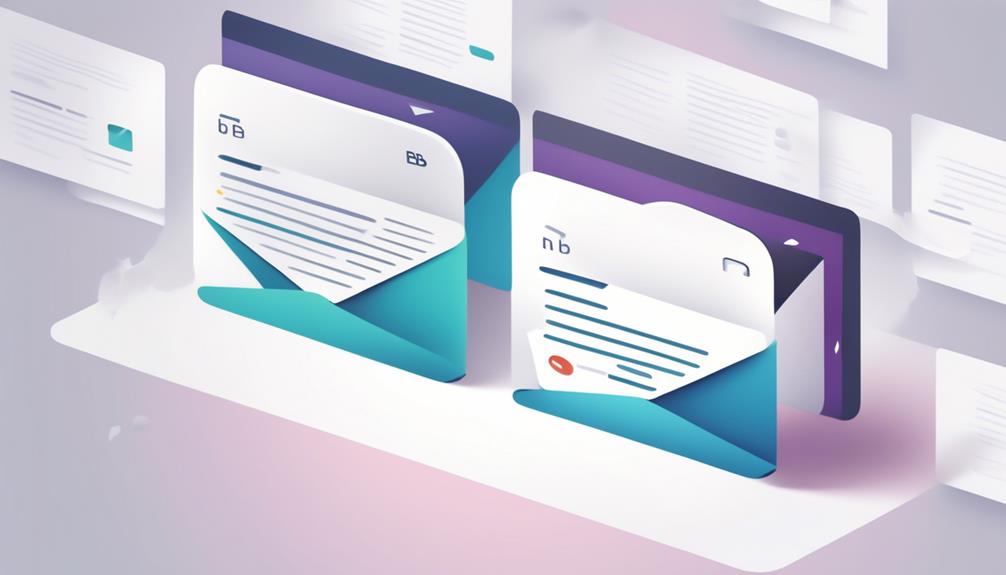
Regarding email marketing, are you aware that 47% of recipients make their decision to open an email just by looking at the subject line? Using A/B testing can significantly enhance the potency of your email subject lines, yet it’s crucial to implement this method with a strategic plan.
As we explore the top tips for effective A/B testing, we'll uncover the nuances of personalization, character count, and the use of emojis to capture your audience's attention and drive engagement.
Join us as we unravel the intricacies of subject line testing and uncover the keys to captivating your audience from the very first glimpse in their inbox.
Key Takeaways
- Personalization strategies, such as using personalized tokens and recipient-specific details, can improve open rates and create rapport with subscribers.
- Aim for subject lines that are between 6 to 10 words in length for optimal open rates and conversion rates.
- Experiment with different subject line lengths through split testing to enhance open rates and click-through rates.
- Test and compare the open rates of emails with question-based subject lines and statement-based subject lines to understand which style resonates best with your audience.
Personalization Strategies
When crafting email subject lines, utilizing personalized tokens and recipient-specific details can significantly enhance engagement and open rates. Personalization strategies involve tailoring email content to individual subscribers based on their data and preferences. This can be achieved by using recipients' names in subject lines, which not only improves open rates but also creates a sense of rapport.
Additionally, segmenting email lists based on customer actions, industries, and preferences enhances personalization and relevance. Experimenting with personalization tokens, such as location or pet names, can add a personalized touch to subject lines, making them more appealing to recipients. Moreover, personalizing subject lines with 'you' or 'your' can directly address and engage recipients, increasing the likelihood of them opening the email.
In the realm of marketing, catchy email subject lines are crucial for driving open rates and engagement. Testing tools can help in evaluating the effectiveness of personalization strategies. By testing different personalization techniques, marketers can identify the most effective approaches for improving open rates and overall email marketing performance.
Length and Character Count
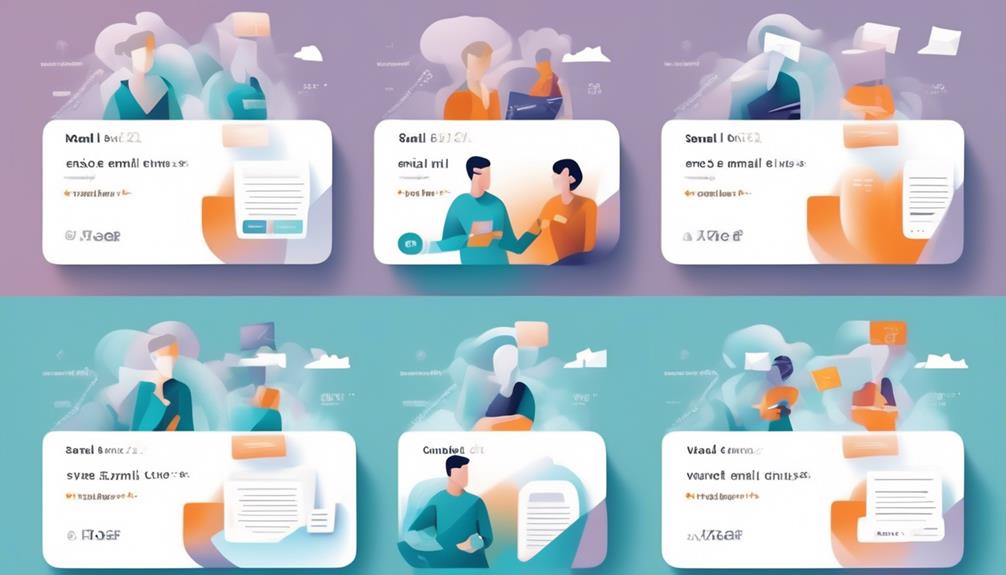
When it comes to email subject lines, the length and character count play a crucial role in grabbing the recipient's attention.
We've found that subject lines with 6-10 words tend to perform the best in terms of open rates.
It's essential to consider the impact of different character counts on various devices and displays to ensure maximum visibility and effectiveness.
Optimal Subject Line Length
For optimal open rates, aim for subject lines that are between 6 to 10 words in length, as this range tends to yield the best results. Keeping subject lines within this optimal length range can significantly impact open rates. To illustrate the impact of subject line length, consider the following data:
| Subject Line Length | Average Open Rates | Conversion Rate |
|---|---|---|
| 1-5 words | 24% | 12% |
| 6-10 words | 32% | 18% |
| 11-15 words | 20% | 10% |
As shown in the table, subject lines with 6-10 words have the highest average open rates and conversion rates. This highlights the importance of testing subject line length and optimizing it for maximum impact. By conducting split testing and analyzing statistical significance, you can fine-tune your subject line length to improve email open rates and ultimately enhance conversion rates.
Impact of Character Count
Transitioning from our previous discussion on optimal subject line length, we now turn our focus to the impact of character count, exploring how the length and character count of subject lines can influence engagement and open rates.
When considering the impact of character count on subject lines for effective email marketing, here are some key points to keep in mind:
- Optimal Range: Aim for subject lines of around 6-10 words, as this range has shown the best open rates.
- Display Issues: Long subject lines can cause display problems on various devices and dilute the main subject, so concise is crucial.
- Length Variation: Subject lines between 1 and 20 characters also performed well in terms of open rates, emphasizing the impact of character count on engagement.
Experimenting with different lengths through split testing in your email campaigns can help discover the most effective approach for enhancing open rates and click-through rates.
Question Vs. Statement
Understanding the nuanced impact of question-based versus statement-based subject lines is crucial for optimizing email engagement and maximizing open rates. When it comes to email campaigns, the subject line plays a pivotal role in capturing the recipient's attention.
In our marketing efforts, split testing different versions of subject lines, one posing a question and the other making a statement, has revealed intriguing insights. Questions tend to pique curiosity and prompt the recipient to open the email to find the answer, potentially boosting open rates. Conversely, statement-based subject lines can convey a sense of authority and clarity, potentially influencing click-through rates.
Both styles have their merits, and understanding which resonates best with your audience is vital. By testing and comparing the open rates of emails with question-based subject lines against those with statement-based subject lines, we can glean valuable insights into our audience's preferences.
This data-driven approach empowers us to make informed decisions, ensuring that our email campaigns aren't only opened but also successfully drive engagement and conversions.
Use of Emojis

Piquing curiosity and prompting engagement through subject lines is a critical aspect of email marketing. One innovative strategy that has shown promising results is the use of emojis.
When incorporating emojis into subject lines, it's essential to consider the emotional impact they can have on recipients. Here's how to effectively use emojis to evoke emotion in your audience:
- Relevance: Select emojis that are relevant to your email content or audience. This personalization can create a connection and resonate with recipients, increasing the likelihood of them opening the email.
- Moderation: Avoid overloading subject lines with emojis or using ones that may not display properly on all devices. A balanced and well-placed emoji can add a touch of creativity without overwhelming the recipient.
- Testing and Iteration: Experiment with different emojis to see which ones yield the best results. A/B testing subject lines with emojis against those without can provide valuable insights into their impact on open rates and click-through rates.
Capitalization Techniques

When it comes to capitalization techniques in email subject lines, we've found that case sensitivity can have a significant impact on open rates.
By analyzing the length of words and testing the use of special characters, we've uncovered valuable insights into which capitalization styles resonate best with our audience.
We've also discovered the power of strategically capitalizing key words and phrases to draw attention and emphasize important elements within subject lines.
Case Sensitivity Impact
In our email subject line A/B testing, we've observed a significant impact on open rates and click-through rates based on the capitalization techniques used.
When it comes to case sensitivity in email subject lines, here's what we've learned:
- Consistent Capitalization: Using consistent capitalization throughout the subject line can convey a sense of professionalism and clarity to the recipient, potentially leading to higher open rates.
- Mixed Case: Experimenting with mixed case, where the first letter of each word is capitalized, can create a visually appealing and easy-to-read subject line, increasing the likelihood of recipients engaging with the email.
- All Caps for Urgency and Scarcity: Implementing all caps for words related to urgency and scarcity, such as 'Limited Time Offer' or 'Last Chance,' can create a sense of importance and drive higher open rates.
In our A/B test variations, we've found that the strategic use of case sensitivity can significantly impact the effectiveness of subject line testing.
Word Length Analysis
Experimenting with different capitalization techniques and word lengths in email subject lines can provide valuable insights into recipient engagement and response rates. When testing word length, we aim to discover the ideal character count that maximizes open rates and click-throughs. By sending split testing versions with varying word lengths, we can identify patterns in recipient behavior.
Additionally, capitalization styles, such as sentence case or title case, play a crucial role in the visual appeal and readability of subject lines. Testing different capitalization strategies alongside word length allows us to boost email marketing campaigns.
Through A/B testing, we can compare the performance of subject lines with distinct word lengths and capitalization styles, ultimately enhancing the effectiveness of our email marketing efforts.
Special Character Testing
- All uppercase: Commands attention and conveys a sense of urgency, often used for time-sensitive offers or promotions.
In addition, we found that capitalizing the first letter of each word in the subject line generally performed better than using all lowercase or all uppercase. However, the specific capitalization style that yielded the highest response rates varied depending on the target audience and the nature of the email content.
Punctuation Variations
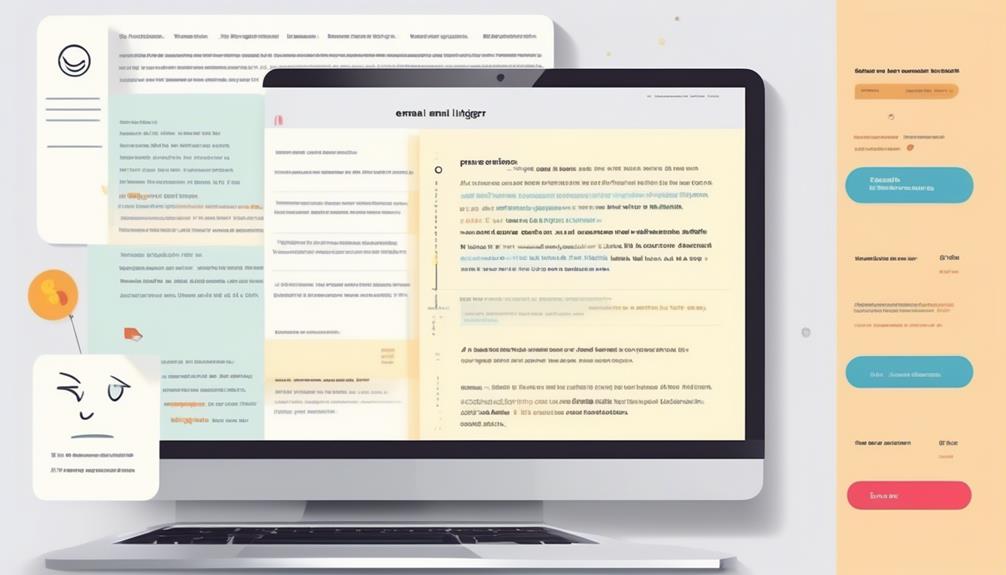
Using different punctuation styles can significantly impact the tone and urgency conveyed in email subject lines. When testing subject line variations, we've found that punctuation can be a game-changer in capturing the reader's attention.
For instance, adding an exclamation point can inject excitement and urgency into a subject line, making it more compelling and enticing to open. Conversely, ellipses can create a sense of curiosity and mystery, prompting the reader to seek more information. We've also observed that question marks can stimulate engagement by prompting the reader to ponder a question posed in the subject line.
Additionally, experimenting with commas or hyphens can create pauses or emphasis, influencing the flow and readability of the subject line. Furthermore, testing the use of quotation marks can help convey specific phrases or highlight key terms, aligning with marketing priorities and seasonal highs and lows.
Urgency and Timeliness
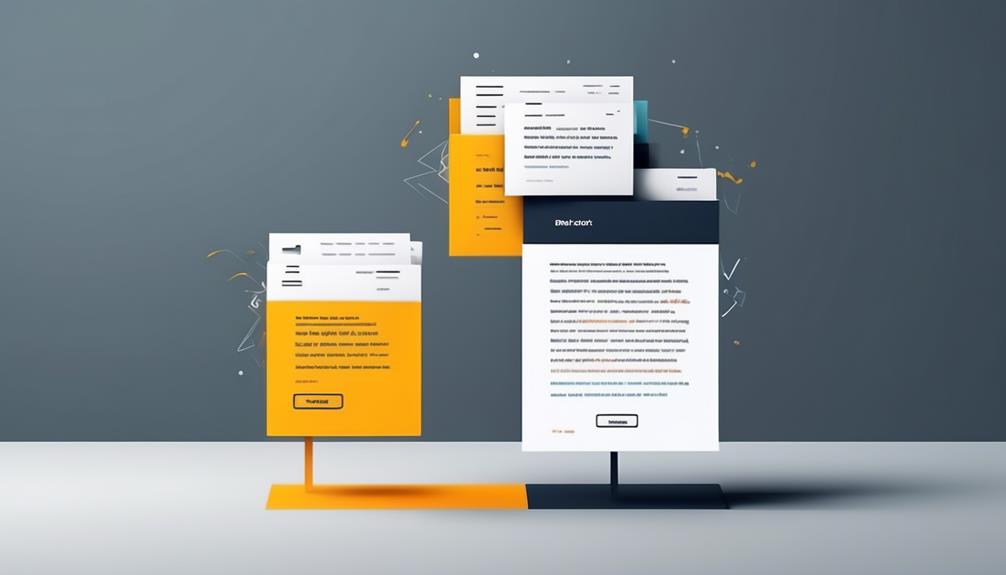
When it comes to email subject lines, urgency and timeliness can make all the difference in grabbing the reader's attention. Incorporating phrases like 'limited time,' 'expires soon,' or 'today only' can prompt immediate action and drive open rates.
Testing subject lines with and without urgency triggers will help us measure the impact on open rates and engagement, allowing us to strategically optimize our email campaigns.
Time-Sensitive Subject Lines
Incorporating time-sensitive language like 'urgent' or 'expires tomorrow' can significantly boost email open rates by creating a sense of immediacy and exclusivity for recipients. When testing your email subject lines, consider using time-sensitive language to drive urgency and prompt action from your audience.
Here's how you can effectively use time-sensitive subject lines to maximize email open rates:
- Utilize phrases like 'limited time offer' or 'act now' to create a sense of scarcity and exclusivity.
- Experiment with countdowns or specific dates to convey urgency and prompt immediate engagement.
- Clearly communicate the time-sensitive nature of your email content to align with your marketing priorities and drive open rate improvements.
Creating a Sense of Urgency
Time-sensitive subject lines have proven to be a powerful tool for boosting email open rates, and now, we turn our focus to the art of creating a sense of urgency to further enhance recipient engagement. Incorporating urgency-triggering words like 'urgent,' 'breaking,' and 'limited time' can significantly impact open rates. Additionally, using countdowns, limited-time access, and action-oriented language instills a sense of urgency, encouraging immediate action. To communicate scarcity or exclusivity, creating a countdown to a specific event or offer in subject lines can be highly effective. It's essential to avoid overwhelming recipients with excessive emails while effectively using urgency triggers in subject lines. Experimenting with different urgency triggers and action-oriented language through split testing can gauge their impact on open rates and recipient engagement.
| Urgency-Triggering Words | Action-Oriented Language | Creating a Countdown |
|---|---|---|
| Urgent | Act Now | Limited Time |
| Breaking | Get It Now | Exclusive Offer |
| Limited Time | Don't Miss Out | Countdown Clock |
Specific Vs. Ambiguous Copy
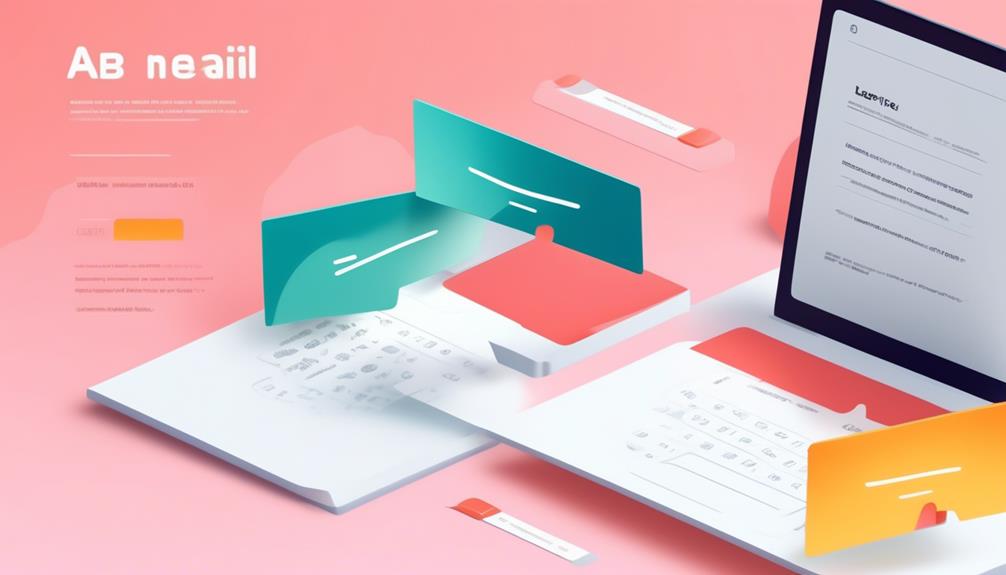
Highlighting specific benefits and outcomes in email subject lines can significantly increase open rates and engagement with the content. When it comes to A/B testing subject lines, using specific copy can make all the difference.
Here are three key strategies to keep in mind:
- Clearly Communicate Value: Use subject lines to clearly communicate the value or benefits of opening the email. Whether it's highlighting a free offer, a valuable resource, or an exclusive opportunity, specific language can entice recipients to open the email and engage with the content.
- Specify Content Type: Incorporate specific content format indicators in subject lines, such as 'eBook,' 'video,' or 'guide,' to provide recipients with a clear idea of what to expect. This can help in aligning the subject line with the recipient's interests, increasing the likelihood of an open.
- Test Synonyms and Emojis: Experiment with different versions of subject lines that mention 'free' or use synonyms like 'complimentary' to convey the concept of 'free' without using the exact word. Additionally, consider incorporating emojis to make subject lines visually appealing, but ensure they display correctly across various devices.
Gratitude and Appreciation
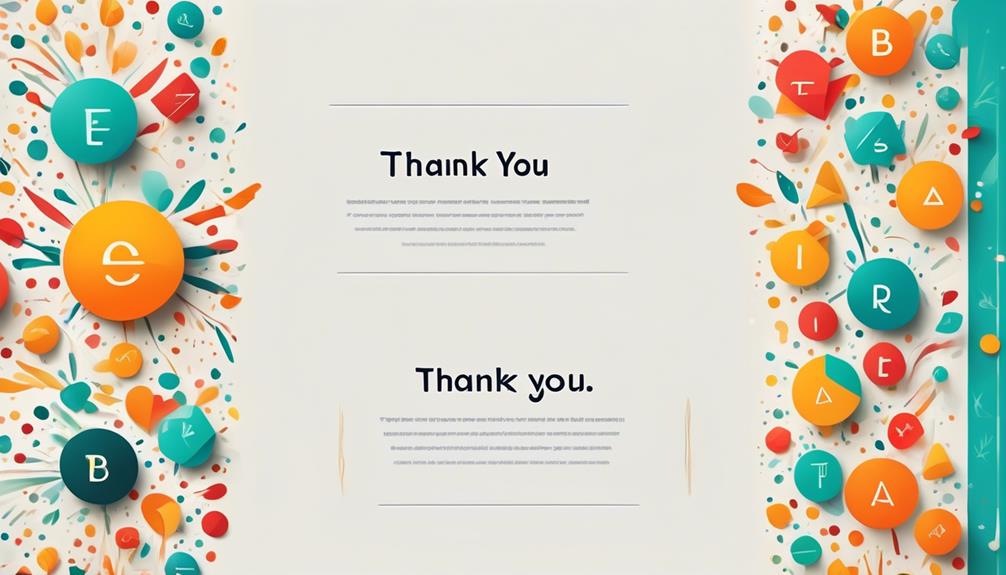
Recognizing and appreciating the specific benefits and outcomes of utilizing gratitude and appreciation in both personal and professional settings can cultivate a more positive and supportive environment, boosting morale and strengthening relationships.
In email marketing, expressing gratitude and appreciation in subject lines can significantly impact open rates and click-through rates. Through split testing, different versions of subject lines can be compared to determine which resonates best with the audience.
By incorporating gratitude and appreciation into subject line content, marketers can align their messaging with the values of their subscribers, increasing the likelihood of successful email open rates. Making gratitude and appreciation a priority in email marketing goals can enhance customer engagement and loyalty.
Furthermore, email marketing tools provide valuable data on the performance of subject lines, allowing for continuous testing and optimization. Embracing gratitude and appreciation in email marketing not only aligns with ethical marketing priorities but also contributes to building a more supportive and positive brand image.
Name Recognition
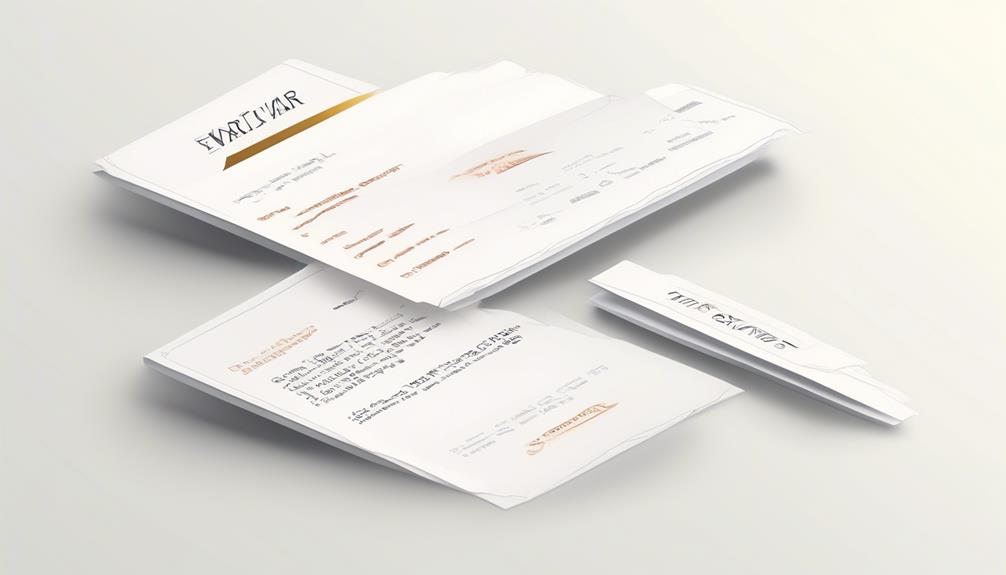
We've discovered that incorporating the recipient's name in the subject line of an email can significantly enhance engagement and open rates. Name recognition is a powerful tool in email marketing, and here are some key strategies for leveraging it effectively:
- Personalization Matters: When testing name recognition in subject lines, consider using the recipient's first and last name for a more personalized touch. This level of personalization can make the recipient feel valued and increase the likelihood of the email being opened.
- Avoid Overuse: While name recognition can be effective, it's essential to use it sparingly. Overusing a recipient's name in every email subject line can come across as insincere and may lead to decreased engagement over time. Test different frequencies of incorporating the recipient's name to find the right balance.
- Test Different Approaches: Experiment with variations of name recognition in subject lines through split testing. Test different versions of subject lines, each with varying levels of personalization, to determine which approach yields the highest open rates and click-throughs.
Segmentation and Targeting
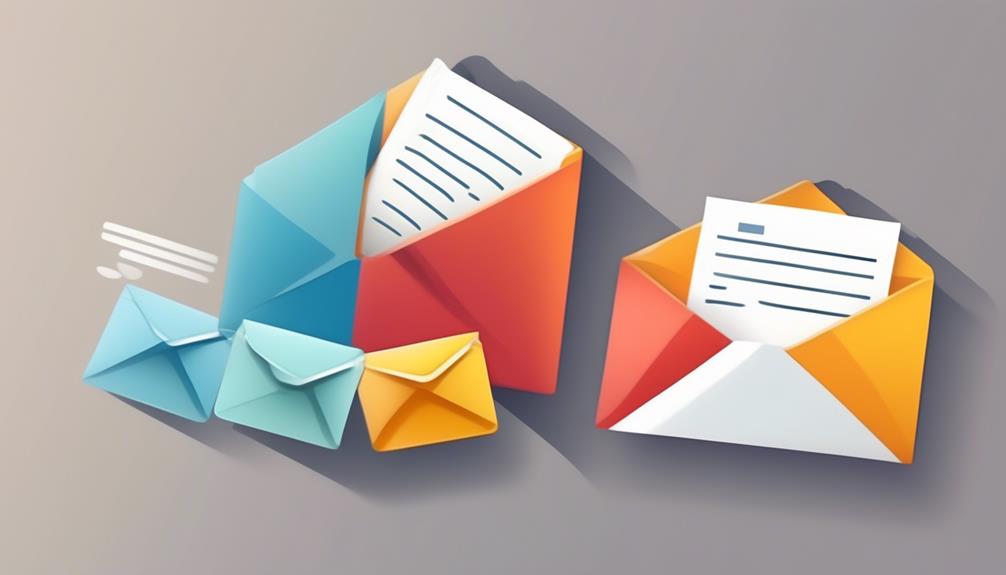
To maximize the effectiveness of email marketing, we strategically segment and target our audience based on their preferences and behaviors. By doing so, we can tailor our email content and subject lines to resonate with specific segments, ultimately leading to higher open rates and engagement. Segmentation allows us to divide our audience into distinct groups based on demographics, purchase history, engagement level, and more. This enables us to create personalized and relevant content that speaks directly to the interests and needs of each segment.
| Segmentation Criteria | Targeted Content |
|---|---|
| Demographics | Personalized product recommendations |
| Purchase History | Promotions based on past purchases |
| Engagement Level | Re-engagement campaigns for inactive users |
| Geographic Location | Localized event invitations |
Segmentation and targeting are crucial components of effective email marketing. They allow us to conduct A/B testing on subject lines and email content for different segments, ensuring that the messaging resonates with each group. As a result, our open rates improve, and we can prioritize our marketing efforts based on the performance of various segments. By continually testing and optimizing our email campaigns, we can achieve higher open rates and overall engagement.
A/B Testing Tools

Utilizing A/B testing tools is essential for optimizing email marketing campaigns. These tools help identify the best-performing email versions by analyzing different variations and making data-driven decisions. This ultimately enhances open rates and click-through rates, improving recipient engagement.
A/B testing tools enable strategic planning and testing of different elements. Marketers can test variations in subject lines, content, and visuals to understand their impact on recipient engagement. This allows for ongoing optimization of campaigns, empowering marketers to make data-driven decisions based on empirical results.
Some email marketing platforms, like Campaign Monitor and DailyStory, provide built-in A/B testing capabilities. This streamlines the process of testing and analyzing email variations, making it more efficient.
What are the Top Tips for Effective Email Subject Line A/B Testing?
When it comes to improving email open rates, using ab testing tactics for emails can be highly effective. The top tips for successful A/B testing of email subject lines include keeping it simple, incorporating personalization, using emojis strategically, and experimenting with different lengths and tones to see what resonates best with your audience.
Frequently Asked Questions
What Is the Correct Strategy for the Email Subject Line?
We believe the correct strategy for the email subject line involves careful A/B testing. By sending different variations to subsets of subscribers, we can pinpoint the most effective subject line.
It's crucial to test one variable at a time and justify any changes with clear reasoning.
Consistent timing for sending control and adjusted emails is key for reliable data.
Utilizing statistical significance with a p-value of 5% or lower helps determine the impact of A/B test results on email campaign performance.
Which Aspect of the Subject Line Can Be Evaluated With a B Email Testing?
Which aspect of the subject line can be evaluated with A/B email testing?
We can assess various elements like personalization, urgency, length, content type, emojis, capitalization style, and specific benefits.
Segmenting recipients strategically for unbiased results is crucial.
Consistent timing ensures accurate measurement of subject line impact.
Statistical significance, with a p-value of 5% or lower, is essential for reliable A/B test results.
Creative strategies include personalization, content type, capitalization styles, and product descriptions.
How to Do Ab Testing for Emails?
We conduct A/B testing for emails by sending two versions to different audiences, measuring their performance, and adjusting based on results. It's crucial to test one variable at a time and maintain consistent timing.
Planning and understanding testing elements are key. A/B testing for emails can include subject lines, call to action, design, personalization, email copy, images, and offers.
Optimization through A/B testing can enhance open and click-through rates and provide insights into customer preferences.
How Should the Subject Line of an Effective Email Be?
We believe an effective email's subject line should be concise, impactful, and tailored to the recipient.
It's crucial to clearly convey value and create curiosity or urgency. Personalization, like using the recipient's name, can significantly enhance engagement.
Testing different elements such as length and specific benefits is vital to identify what resonates best with the audience.
Conclusion
In conclusion, when it comes to crafting effective email subject lines, it's important to remember that every little tweak can make a big difference.
By testing different variables like personalization, length, and tone, and using A/B testing tools, we can uncover valuable insights to optimize our email marketing strategy.
So, let's keep experimenting and refining our approach to ensure our emails stand out in the crowded inbox landscape.
Happy testing!
Natali – Editor in Chief (Strategy and Mastery, AI Expert) Natali, our Editor in Chief, is the driving force behind our content’s strategic direction. With a keen eye for detail and a deep understanding of market trends, Natali ensures that our content is top-notch and strategically aligned with our client’s goals. Her expertise in AI helps to seamlessly integrate advanced technology into our marketing strategies, pushing the boundaries of conventional marketing.
Email Optimization Testing
7 Key Tips for Effective Email A/B Testing
A/B testing can revolutionize your email marketing, and these 7 tips will show you how to do it right.
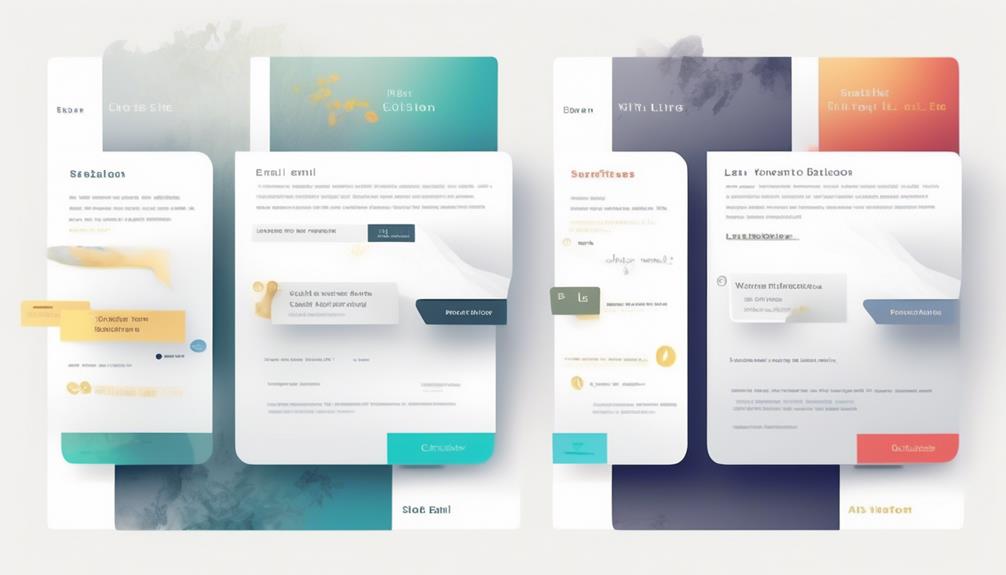
Conducting A/B testing in your email campaigns is vital for enhancing the effectiveness of your email marketing efforts.
But with so many variables to consider, it can be overwhelming to know where to start.
That's why we've compiled 7 key tips that can make a significant impact on the success of your A/B testing efforts.
From isolating test variables to defining your target audience, these strategies will help you unlock valuable insights and drive better results.
Key Takeaways
- Isolating variables in email A/B testing is crucial for gaining clear insights into the impact of specific variations.
- Incorporating a control version in email A/B testing establishes a baseline for comparison and accurately analyzes the effectiveness of any changes made.
- Simultaneous testing allows for concurrent comparison of multiple email versions, providing quicker insights and informed decision-making.
- Validating statistical significance is crucial when analyzing the results of an A/B test to ensure reliable decision-making based on robust data.
Isolate Test Variables
Isolating test variables in email A/B testing is crucial for accurately assessing the impact of individual elements on campaign performance. When conducting A/B testing, focusing on one variable at a time is imperative to gain clear insights into the effect of specific variations.
By isolating variables such as subject lines, the impact on open rates, and conversion rates becomes more evident. Analyzing the impact of each isolated variable provides valuable data for making informed decisions and refining email content effectively.
This approach allows for a thorough understanding of which elements contribute to the success or failure of an email campaign, leading to more strategic and impactful adjustments. It's essential to ensure statistical significance when testing, and isolating variables aids in achieving this by clearly identifying the impact of each change.
Use Control Versions
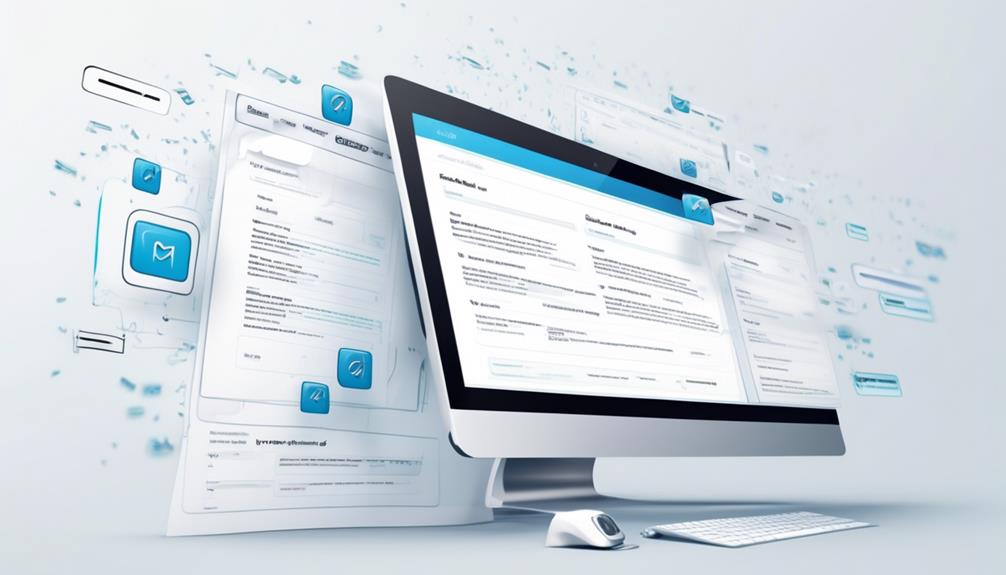
How can we effectively establish a baseline for comparison in email A/B testing?
When it comes to email A/B testing, using a control version is crucial for accurately measuring the impact of any alterations. Here's why incorporating control versions is essential:
- Unchanged Baseline: The control version serves as an unchanged baseline, allowing for a direct comparison with the variations being tested.
- Impact Measurement: By comparing the performance of the control version with the variations, we can accurately analyze the effectiveness of any changes made.
- Reference Point: The control version acts as a reference point for evaluating the success of the tested elements, such as subject lines, CTA buttons, or other marketing components.
- Accurate Results: Incorporating a control version ensures that the A/B testing results are reliable and accurate, providing valuable insights for email marketers to optimize open rates, conversion rates, and overall email effectiveness.
Simultaneous Testing
To maximize the efficiency and speed of email A/B testing, employing simultaneous testing allows for the concurrent comparison of multiple email versions, facilitating quicker insights and informed decision-making. This method is invaluable for evaluating a range of variables simultaneously, leading to more efficient testing and faster decision-making.
Simultaneous testing enables marketers to gather comparative data on different elements within the same timeframe, aiding in quicker optimization of email marketing strategies. It's particularly effective when multiple changes or elements need to be tested in an email campaign. By running simultaneous tests, marketers can efficiently optimize various aspects of their emails without extending the testing duration, ultimately leading to improved results in terms of open rates, click-through rates, and conversion rates.
This approach can be used to test different elements such as subject lines, email copy, and offers, providing valuable insights that can inform marketing decisions. Overall, simultaneous testing streamlines the A/B testing process, allowing for comprehensive testing of multiple variables in a shorter time frame.
Validate Statistical Significance

When analyzing the results of an A/B test, it's crucial to validate the statistical significance of the differences in performance between the email variants to ensure reliable decision-making based on meaningful results.
Here are the key steps to validate statistical significance:
- Use statistical tools: Employ statistical tools such as t-tests or chi-squared tests to determine if the differences in performance between your email variants are statistically significant.
- Ensure a large enough sample size: Validate statistical significance by ensuring that the sample size is large enough to draw meaningful conclusions. Small sample sizes may lead to unreliable results.
- Increase open rates: By confirming statistical significance, you can be confident that any observed increase in email opens isn't due to random chance, providing actionable insights for improving future email campaigns.
- Make informed decisions: Validating statistical significance ensures that the observed differences in performance between email variants are reliable and not merely coincidental, allowing you to make informed decisions based on robust data.
Continuous Testing
Let's talk about the importance of testing frequency, varied content, and monitoring results in continuous testing.
By testing frequently, we can gather valuable data to make informed decisions about our email content.
Varying the content allows us to understand what resonates best with our audience and continually improve our email performance.
Monitoring results ensures that we can adapt and optimize our email campaigns in real-time for better engagement and results.
Test Frequency
Engage in ongoing A/B testing to continuously optimize and refine various elements of our email campaigns. Continuous testing helps us make informed email marketing decisions and constantly improve our strategy.
Here's why test frequency is crucial:
- Varied Email Clients: Different email clients might test different rendering, making continuous testing essential for compatibility.
- Email Open Rates: Testing different subject lines and content can significantly impact email open rates.
- Personalization and Segmentation: Continuous testing helps optimize personalization and segmentation for enhanced engagement.
- Overall Campaign Performance: Regular A/B testing ensures that our email campaigns consistently perform at their best.
Varied Content
Continuous testing of varied content elements in email marketing is essential for optimizing performance and enhancing engagement with our audience. By using A/B testing, we can isolate and measure the impact of specific content elements such as subject lines, personalization, images, call to action, and timing on email performance. Testing across multiple email clients ensures consistent rendering and user experience. It's crucial to define our audience and segment them randomly for accurate testing, gathering valuable insights. Proper data management and monitoring results are essential for making informed decisions to continuously improve our email marketing strategy.
| Content Element | Metric | Best Version Might See Which % |
|---|---|---|
| Subject Lines | Open Rate | 25% |
| Personalization | Click-Through Rate | 18% |
| Call to Action | Conversion Rate | 15% |
Monitor Results
Continuously monitoring the results of our email A/B tests allows us to gather ongoing insights on the performance of different email variations. Here's why continuous testing is crucial:
- Identify trends and patterns in conversion rates and open rates.
- Analyze and compare data to understand the impact of subject line variations.
- Use insights to iterate and improve email campaign elements.
- Detect shifts in audience behavior and preferences.
Test Across Email Clients

When testing email campaigns across multiple email clients, it's crucial to ensure consistent rendering and optimized user experience. A/B testing across various email platforms and devices is essential for achieving this goal.
It's important to use A/B testing tools that allow you to preview and test emails across different email clients, considering factors such as formatting, images, and responsiveness. This approach ensures that your emails appear as intended and provide a seamless experience for all recipients, regardless of the email client they use.
Testing across email clients can also help maximize the effectiveness of your marketing efforts by optimizing conversion rates and open rates. It allows you to refine elements such as the subject line, testing ideas, transactional emails, and send time to better resonate with your target audience.
Define Target Audience
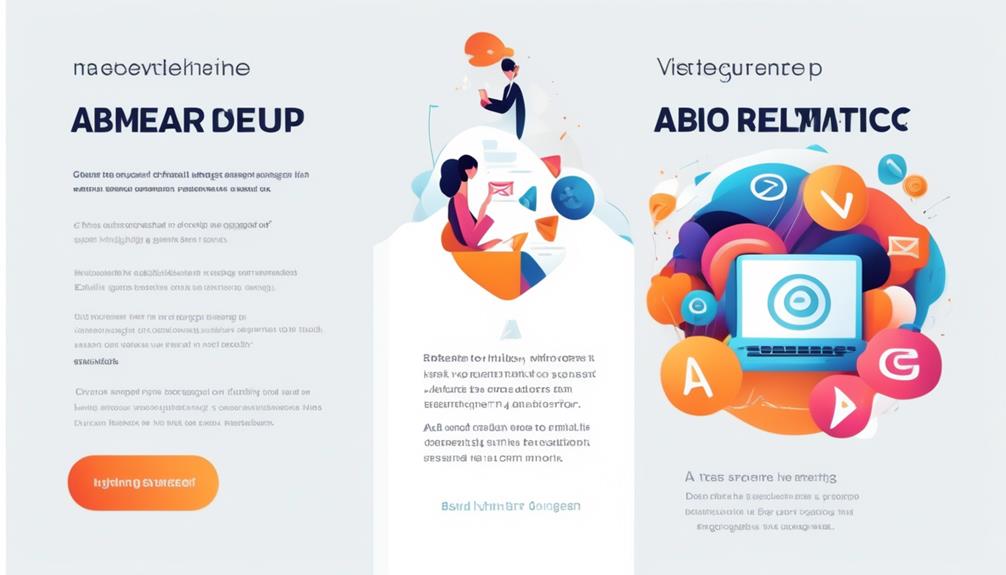
To optimize A/B testing decisions for email campaigns, a clear understanding of the target audience's characteristics and preferences is crucial. This knowledge allows for the creation of tailored email variations that resonate with the audience, ultimately leading to improved conversion rates.
Here are key steps to define your target audience for effective A/B testing:
- Demographics and Behaviors: Utilize customer data to understand the demographics, behaviors, and preferences of your audience, informing the creation of different versions of emails that are likely to resonate.
- Audience Segmentation: Segment your audience based on specific criteria such as age, location, or past engagement. This allows for targeted A/B tests, ensuring that each email version reaches the most relevant recipients.
- Addressing Unique Needs: Consider the unique needs and pain points of your target audience when creating email variations for testing. This personalized approach can significantly impact open rates and engagement.
- Continuous Refinement: Continuously refine and update your understanding of your target audience to ensure the relevance and effectiveness of your A/B testing efforts. This can be achieved through the use of email automation and ongoing analysis of customer data.
What Are Some Additional Tips for Successful Email A/B Testing?
When it comes to successful email testing tactics for success, consider testing one element at a time for accurate results. Also, ensure your sample size is large enough for statistically significant data. And don’t forget to analyze your results to inform future email campaigns.
Frequently Asked Questions
How to Do Ab Testing for Emails?
When it comes to A/B testing for emails, we focus on testing different subject lines, personalizing content, experimenting with images, timing email sends, and identifying effective CTAs.
These actions help us understand what resonates with our audience and drives engagement. By analyzing the data from these tests, we can make informed decisions to optimize our email campaigns for better results.
It's all about finding what works best for our subscribers.
How Do You Do an Effective Ab Test?
We conduct effective A/B tests by:
- Defining clear hypotheses
- Testing one variable at a time for accurate measurement
- Using a large enough sample size for statistical significance
After conducting the A/B test, we:
- Iterate and improve based on the insights gained from testing
- Implement the winning version
- Apply the learnings from the A/B test
This allows us to:
- Continuously optimize and enhance our strategies
- Ensure data-driven decision-making
- Maximize the impact of our testing efforts.
What Are the Key Metrics for a B Testing?
Key metrics for A/B testing include:
- Open rates
- Click-through rates
- Conversions
These metrics measure the effectiveness of different variations in engaging recipients and driving desired actions. Analyzing these metrics provides valuable insights into what resonates with the audience and what drives results.
On What Part of Parts of Your Email Can You Conduct a B Testing?
We can conduct A/B testing on various parts of our email to optimize engagement and conversion rates. This includes subject lines, personalization, images, call to action, and timing.
By testing variables like length, personalization impact, image types, CTA variations, and optimal send times, we can gather valuable insights to enhance the effectiveness of our email marketing campaigns.
These tests are essential for refining our strategies and maximizing results.
Conclusion
In conclusion, email A/B testing is a powerful tool for optimizing marketing strategies. By isolating variables, using control versions, and continuously testing, we can gain valuable insights into what resonates with our audience.
It's like fine-tuning a musical instrument to create the perfect harmony in our email campaigns. With continuous testing and data-driven decisions, we can achieve better results and drive greater success in our email marketing efforts.
Natali – Editor in Chief (Strategy and Mastery, AI Expert) Natali, our Editor in Chief, is the driving force behind our content’s strategic direction. With a keen eye for detail and a deep understanding of market trends, Natali ensures that our content is top-notch and strategically aligned with our client’s goals. Her expertise in AI helps to seamlessly integrate advanced technology into our marketing strategies, pushing the boundaries of conventional marketing.
Email Optimization Testing
Top A/B Testing Strategies for Email Success
Want to boost your email marketing performance? Discover the top A/B testing strategies that can take your campaigns to the next level.

As marketing professionals, we continually navigate the obstacle of distinguishing ourselves in crowded email landscapes, vying for notice among an overwhelming number of others. It’s an intimidating endeavor, yet it’s one that can be successfully managed with appropriate tactics.
A/B testing is a powerful tool that allows us to compare different elements of our emails to understand what resonates best with our audience. But what are the top strategies for A/B testing that can truly elevate the success of our email campaigns?
Let's explore the key techniques and best practices that can make all the difference in driving higher engagement and conversions.
Key Takeaways
- A/B testing for email is crucial for optimizing open and click-through rates, preventing poor email deliverability, and identifying the impact of different campaign elements.
- Key variables to test include subject lines, offers and CTAs, design and format, email length, and time of day and frequency.
- Best practices for A/B testing involve focusing on key elements like subject lines, call to action, and design layout, analyzing data to make data-driven decisions, and continuously testing and optimizing email campaigns.
- Strategies and tools for A/B testing include subject line testing, content variation testing, and utilizing essential email testing tools like Litmus, Mailchimp, and Campaign Monitor.
What Is A/B Testing for Email?
A/B testing for email, also known as split testing, is a strategic method used by marketers to experiment with different variations of emails in order to determine the most effective approach for improving open and click-through rates. This involves testing two versions of an email with slight variances, such as subject lines, to understand audience preferences and optimize campaign performance. By conducting A/B testing, marketers can gain valuable insights into what resonates with their audience, ultimately leading to improved email open rates, click-through rates, website traffic, and conversion rates.
The statistical significance of A/B testing can't be overstated, as it allows marketers to make data-driven decisions. Neglecting A/B testing can lead to poor email deliverability and readability, highlighting the significant impact of this strategy on email marketing success. It provides a clear understanding of email metrics, enabling the optimization of email campaigns for maximum impact.
Ultimately, A/B testing helps marketers to not only increase engagement and conversions but also to gain a deeper understanding of audience behavior and preferences, leading to more effective and targeted email strategies.
Importance of Email A/B Testing
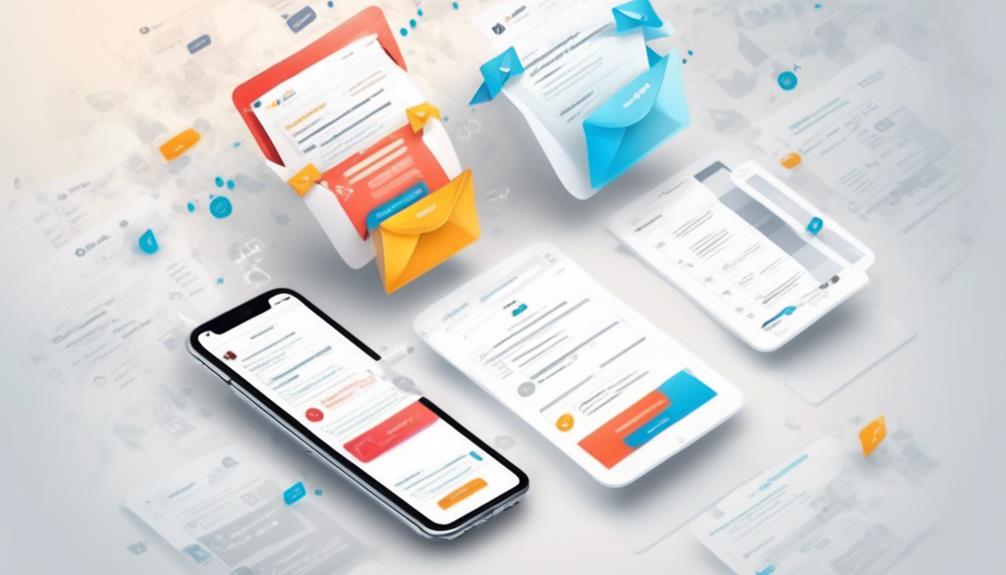
A/B testing is essential for optimizing email campaigns to achieve higher open rates, click-through rates, and conversions.
By analyzing data from A/B tests, we can make strategic decisions to improve campaign performance.
The impact of A/B testing on email success can't be overstated, as it allows us to make data-driven adjustments that lead to significant improvements in engagement and revenue.
Testing Impact
Utilizing email A/B testing is essential for gauging the impact of various elements on campaign outcomes, enabling data-driven decisions and improved engagement. A/B testing significantly influences open and click-through rates, leading to increased website visitors and conversions.
Neglecting A/B testing can result in poor email deliverability, decreased engagement, and missed revenue opportunities. This testing method helps identify the impact of subject lines, offers, design, and copy on campaign outcomes, leading to more effective email marketing strategies.
Marketers can make data-driven decisions based on empirical results, improving engagement, conversions, and revenue. Small changes in emails, such as using a personalized sender name or testing different CTAs, can lead to significant improvements in engagement rates and revenue.
- Optimizes open and click-through rates
- Prevents poor email deliverability and decreased engagement
- Identifies the impact of various campaign elements
- Enables data-driven decisions and improved engagement
- Small changes lead to significant improvements in engagement and revenue
Data-Driven Decisions
With the data-driven insights gained from A/B testing, we can make informed decisions to optimize email campaign performance and engagement. By analyzing A/B test results, we can identify statistically significant differences in open rates, click-through rates, and conversion rates. This allows us to experiment with different email variables such as subject lines, offers, design, and copy to understand their impact on customer engagement and conversions. Utilizing customer data to drive our email marketing decisions ensures that our campaigns are tailored to maximize performance and lead to increased revenue. The table below summarizes the key benefits of data-driven decisions through A/B testing.
| Benefits of Data-Driven Decisions |
|---|
| Identify statistically significant differences |
| Experiment with different email variables |
| Tailor campaigns for maximum performance |
| Increase customer engagement |
| Drive increased revenue |
Key Variables for Email A/B Testing
Testing different variables in email A/B testing is crucial for optimizing the effectiveness of email campaigns. When conducting A/B testing for email marketing, it's essential to consider various key variables to ensure the best possible results. These variables include:
- Subject line: Testing different lengths, personalization, and the use of emojis can significantly impact open rates.
- Offers and CTAs: Testing different types of offers, discounts, and call-to-action placements and designs can influence conversion rates.
- Design and format: Testing plain-text vs. HTML emails, use of images, and interactive design elements can affect engagement and click-through rates.
- Email length: Testing shorter emails for simplicity or longer emails with more details can impact reader engagement and conversion rates.
- Time of day and frequency: Testing different send times and days to maximize open and click-through rates is crucial for achieving optimal results.
10 Best Practices for A/B Testing
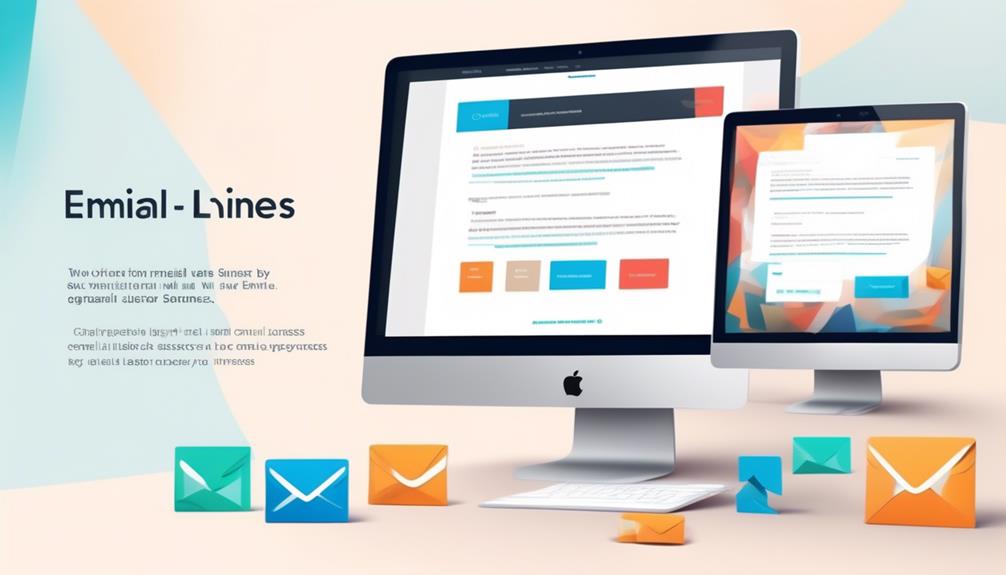
When it comes to A/B testing, we focus on key elements such as subject lines, call to action, and design layout.
These factors play a critical role in determining the effectiveness of email campaigns.
Subject Lines
In A/B testing strategies for email success, subject lines play a pivotal role in engaging recipients and driving open rates. When A/B testing subject lines, consider testing different lengths, personalization, and the use of emojis. Experiment with various types of offers, discounts, and call-to-action placements and designs.
Test plain-text versus HTML emails, use of images, and interactive design elements. Additionally, consider testing shorter emails for simplicity or longer emails with more details. Finally, test different send times and days to maximize open and click-through rates.
A/B testing subject lines can provide valuable insights into what resonates with your audience, ultimately leading to improved open rates, conversion rates, and overall email success for email marketers and their email copy.
Call to Action
As we consider the impact of effective subject lines on driving open rates and engagement, attention shifts to the critical element of the call to action (CTA) in email A/B testing strategies for maximizing click-through rates and conversions. A/B testing different CTA placements, designs, wording, personalized CTAs, urgency, offers, and button optimization can determine the most effective approach for encouraging action. By testing the impact of various elements, we can refine the effectiveness of email campaigns and understand audience preferences. Below is a table summarizing the key aspects to consider when A/B testing CTAs in emails:
| A/B Testing Elements for CTAs | Examples | Impact on Performance |
|---|---|---|
| Placement and Design | Above the fold vs. Below | Click-through rate impact |
| Wording and Personalization | Generic vs. Personalized | Conversion rate influence |
| Urgency and Offers | Limited time vs. Evergreen | Engagement and response rates |
| Button Optimization | Color, Shape, Size | Influence on engagement |
Design Layout
Design layout A/B testing provides valuable insights into the most effective and engaging email visual arrangements. This allows for optimization of open rates, click-through rates, and overall campaign performance.
When conducting A/B testing for email design layout, consider experimenting with plain text versus HTML versions of your email to gauge recipient preferences.
Testing the use of images in your email can help determine the impact on engagement and conversion rates.
Additionally, incorporating elements like social proof and animated GIFs in the design layout can be tested to assess their influence on recipient interaction.
Furthermore, testing different email templates and layouts enables the identification of the most visually appealing and effective design for driving engagement and conversions.
Improving Email Performance With A/B Testing
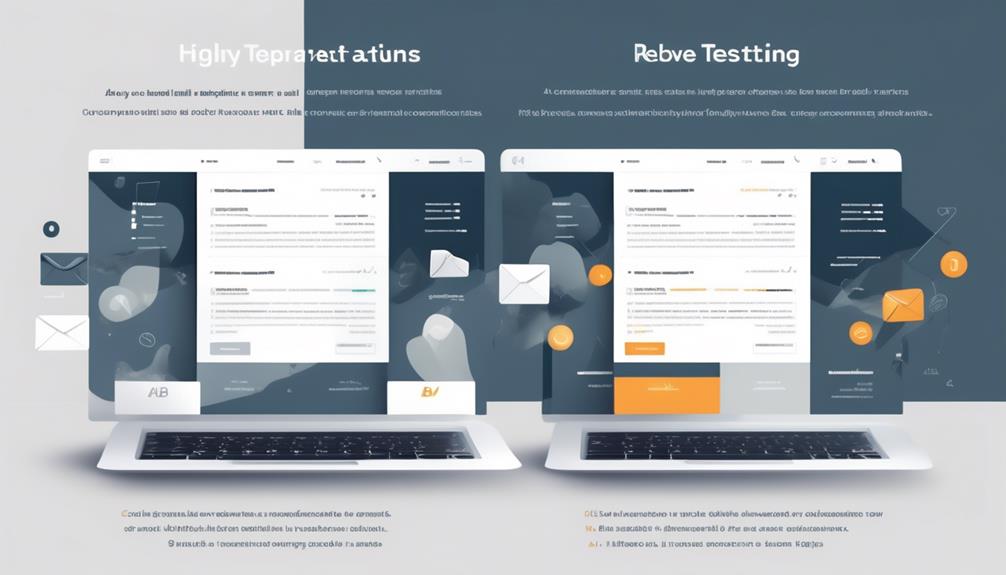
To enhance email performance through A/B testing, we meticulously analyze and optimize various campaign elements for maximum impact. A/B testing is a powerful tool for improving email performance, as it allows us to test different variables and identify the most effective strategies for increasing open rates, click-through rates, and conversion rates. By testing elements such as subject lines, email content, calls to action, and timing, we can gain valuable insights into what resonates most with our audience.
One of the key benefits of A/B testing email campaigns is the ability to make data-driven decisions. By collecting empirical results from A/B tests, we can refine our email strategies to better engage recipients and drive desired actions. A/B testing also enables us to optimize transactional emails, ensuring that crucial communications are effective in achieving their objectives.
Furthermore, A/B testing helps us identify and address potential issues that may impact email performance, such as poor deliverability and readability. By continuously testing and refining our email campaigns, we can maintain high open rates and engagement levels, ultimately contributing to the overall success of our email marketing efforts.
A/B Testing Stats to Consider
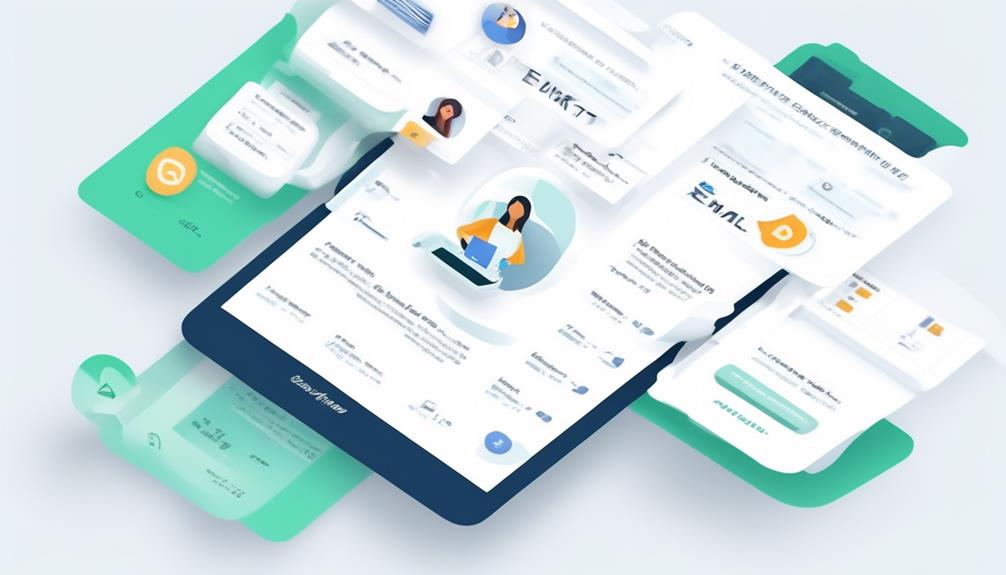
Despite the proven impact of A/B testing on email performance, a staggering 39% of brands neglect to test their broadcast or segmented emails, potentially missing out on valuable insights and optimization opportunities.
When considering A/B testing stats for email success, it's crucial to analyze the following data points:
- Open Rate Variations: A/B testing can reveal which subject lines, sender names, or email content lead to higher open rates, providing valuable insights for optimizing future campaigns.
- Conversion Rates: Testing different calls to action, visuals, or copy can help identify the best-performing elements that drive higher conversion rates, ultimately boosting the effectiveness of email marketing efforts.
- Email Client Compatibility: Understanding how different email clients render your emails can help optimize the design and layout for better user experience across various platforms and devices.
- eCommerce Email Optimization: A/B testing can uncover the most effective strategies for driving sales, such as product recommendations, promotional offers, and personalized content.
- Impactful Changes: Even small adjustments, such as tweaking the email copy, images, or CTAs, can yield significant improvements in engagement rates and revenue generation.
Tips for Effective A/B Tests
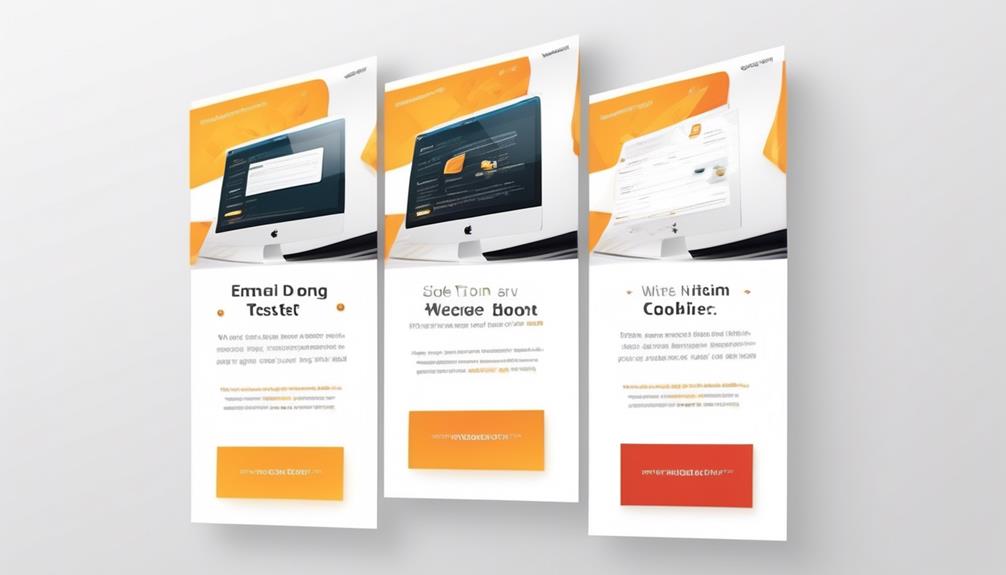
When conducting A/B tests for email campaigns, we focus on key elements such as subject lines and content variation. These two areas play a crucial role in determining the success of our email marketing efforts.
Subject Line Testing
Using A/B testing, marketers can evaluate the effectiveness of different subject line elements to optimize email engagement. Here are some Email A/B Testing Ideas for subject line testing:
- Vary word length, use of emojis, and tone in subject lines to test for effective engagement
- Experiment with different types of offers, discounts, and call-to-action placements and designs to optimize open and click-through rates
- Test plain-text vs. HTML emails, use of images, and interactive design elements for better email performance
- Experiment with different send times and days to maximize open and click-through rates
- Test the impact of personalized content and recommendations to understand audience preferences
Subject line testing is crucial in determining the best approach to catch the audience's attention and drive better email performance.
Content Variation Testing
In conducting content variation testing for email campaigns, we aim to strategically optimize the effectiveness of different content elements through A/B testing. By testing different variations such as subject lines, offers, design, email length, and personalization, we can determine the most impactful elements.
This testing can lead to higher open rates, click-through rates, website traffic, conversions, and reduced unsubscribe rates. Neglecting content variation testing can result in poor email deliverability and readability, impacting overall campaign success.
Furthermore, effective content variation testing enhances the technical side of email marketing, ensuring emails appear correctly on different devices and platforms. It's crucial to experiment with different versions of emails to identify the most compelling content that resonates with subscribers, ultimately boosting engagement and conversion rates.
Essential Email Testing Tools
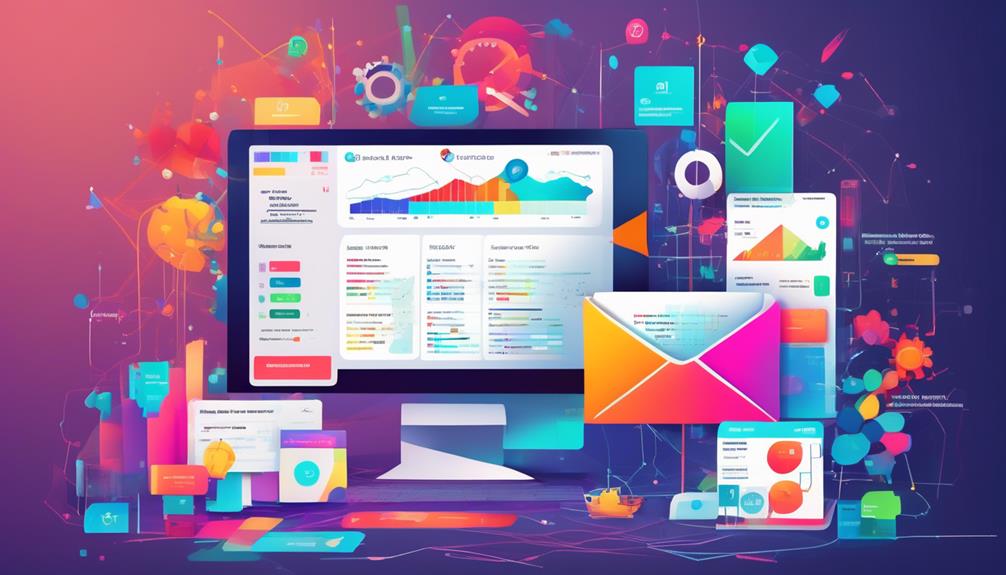
To enhance email campaign performance through A/B testing, leveraging essential email testing tools is imperative for achieving meaningful insights and impactful results. When it comes to A/B testing your emails, the following tools are crucial for optimizing your email marketing strategy:
- Subject Line Testing: Utilize tools like Litmus or CoSchedule to A/B test different subject lines and determine which ones lead to a higher open rate.
- Personalization Testing: Test the impact of including the recipient's first name in the subject line or body of the email using tools like Mailchimp or HubSpot.
- Timing Testing: Experiment with different open times to send emails and identify the optimal timing for your audience using tools like Sendinblue or Constant Contact.
- Content Length Testing: Test the impact of email length on engagement using tools like AWeber or GetResponse to determine the ideal email length for your audience.
- Offer Testing: Use tools like Campaign Monitor or SendGrid to A/B test different offers, such as free shipping or percentage discounts, to see which resonates more with your subscribers.
These tools provide actionable insights for implementing successful A/B test ideas and driving higher engagement and conversions.
A/B Testing Wrap-Up
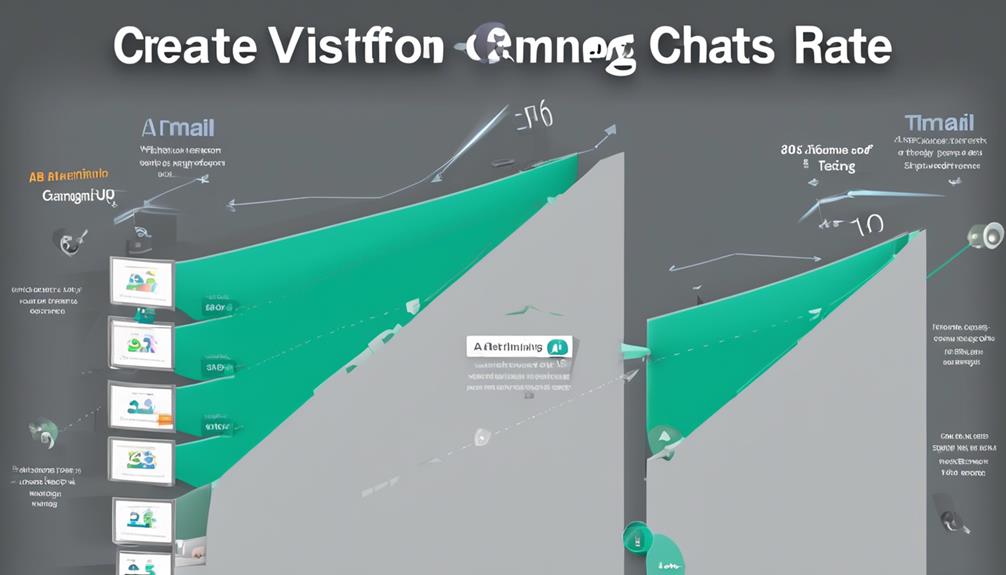
Upon completion of A/B testing, the analysis of results becomes pivotal for determining the most effective strategies and elements in email marketing. It's imperative to closely examine the data from A/B testing to make informed decisions that enhance email success.
Analyzing conversion rates, open rates, and click-through rates is essential for identifying the winning version of the email campaign. Creating two versions, such as testing different subject lines or content variations, allows for a comprehensive comparison of performance metrics.
A common mistake in A/B testing wrap-up isn't considering a sufficiently large sample size, which can lead to unreliable results. Therefore, ensuring a statistically significant sample size is crucial for drawing accurate conclusions from the test data.
The A/B testing wrap-up phase is where the empirical evidence gathered during the testing process is transformed into actionable insights. This data-driven approach enables strategic decision-making and optimization of future email marketing campaigns.
Common Questions About A/B Testing

After deriving actionable insights from the A/B testing wrap-up phase, we can now address the common questions about A/B testing to further enhance our email marketing strategies.
- What're the most critical elements to A/B test in marketing emails?
- How can we mitigate the impact of confounding variables in A/B tests?
- What strategies can we employ to improve conversion rates through A/B testing?
- When should we consider the control version as the winning variant in A/B testing?
- What're the best practices for A/B testing subject lines to maximize email open rates?
Addressing these common questions is crucial for mastering A/B testing and leveraging it to drive email success.
By understanding the key elements to test, mitigating confounding variables, and honing strategies to improve conversion rates, marketers can optimize the performance of their marketing emails.
Additionally, knowing when to deem the control version as the winning variant and implementing best practices for testing subject lines are essential for achieving higher open rates and click-through rates.
Starting Email A/B Testing

When commencing email A/B testing, it's imperative to carefully select the specific elements to be tested in order to yield actionable insights and optimize email campaign performance.
One key variable to test is the subject line, as it plays a crucial role in determining open rates. Campaign Monitor reported that emails with personalized subject lines generate 26% more unique open rates.
Additionally, testing different calls to action, images, or even the email layout can significantly impact conversion rates and ultimately revenue. By focusing on these variables, marketers can gain valuable insights into what resonates best with their audience.
It's important to remember that the goal of A/B testing isn't just to identify the winning version, but to understand why it performs better. This data-driven approach enables continuous improvement and refinement of email marketing strategies.
Neglecting A/B testing means missing out on opportunities to enhance email campaign effectiveness, potentially leading to decreased revenue and engagement. Therefore, starting email A/B testing with a strategic and analytical mindset is fundamental for achieving long-term success.
What are the Best A/B Testing Strategies for Email Open Rate Success?
When attempting to increase email open rates, it’s crucial to utilize effective A/B testing strategies. Try testing different subject lines, email send times, or even the sender’s name. Analyze the data and make adjustments based on what resonates with your audience to achieve email open rate success.
Frequently Asked Questions
What Is Email AB Testing Strategy?
We define email A/B testing as the method to experiment with different email versions. Marketers test two versions with slight variances to determine the winning one.
It's crucial for understanding audience preferences and optimizing campaign performance. Variables like subject lines are tested to identify what resonates with the audience. The goal is to improve email open rates and click-through rates.
A/B testing is an essential tool for continuous improvement in email marketing.
What Is the Best Email Strategy?
We believe the best email strategy involves leveraging A/B testing to optimize open and click-through rates through data-driven decision-making.
By testing variables like subject lines, offers, design, and timing, we continuously challenge and refine our approach.
This approach allows us to make informed, strategic decisions, ensuring our email campaigns are continuously optimized for better performance and audience engagement.
How Do You Do an Effective Ab Test?
We maximize email campaign success through effective A/B testing.
By sending different variations to subsets of subscribers, we identify winning versions. Testing variables like subject lines improves audience resonance and campaign performance.
A/B testing optimizes open rates, click-through rates, website traffic, conversions, and decreases unsubscribe rates.
Neglecting A/B testing impacts email deliverability and readability.
It's crucial for data-driven decisions and achieving better email marketing results.
How Do You Measure the Success of an Ab Test?
We measure the success of an A/B test by analyzing key performance indicators such as open rates, click-through rates, conversions, and unsubscribe rates. By comparing these metrics between the control and variant groups, we can determine which version yields the best results.
Additionally, we consider statistical significance to ensure the validity of our findings. This data-driven approach allows us to make informed decisions and continuously optimize our email campaigns for success.
Conclusion
Just as a ship's captain uses a compass to navigate through rough waters, marketers can use A/B testing to steer their email campaigns towards success.
By analyzing data and strategically testing different variables, we can chart a course for higher open and click-through rates, increased conversions, and improved email performance.
A/B testing is the compass that guides us towards the optimal path for email success.
Natali – Editor in Chief (Strategy and Mastery, AI Expert) Natali, our Editor in Chief, is the driving force behind our content’s strategic direction. With a keen eye for detail and a deep understanding of market trends, Natali ensures that our content is top-notch and strategically aligned with our client’s goals. Her expertise in AI helps to seamlessly integrate advanced technology into our marketing strategies, pushing the boundaries of conventional marketing.
Email Optimization Testing
What Drives Email Open Rates? A/B Testing Insights
Surprising A/B testing insights reveal the secrets behind email open rates, leaving marketers eager to uncover the key findings for their campaigns.

Every day, our inboxes are flooded with myriad emails, yet have you paused to consider why we choose to open certain ones while disregarding the rest? A/B testing sheds light on the elements that influence email open rates, giving marketers a chance to refine their tactics for the greatest effect.
From experimenting with different call-to-action buttons and subject lines to testing the timing and format of email content, the results can be surprising. But what specific elements have the most significant impact?
Join us as we explore the key findings from A/B testing experiments and uncover the insights that could transform your email marketing campaigns.
Key Takeaways
- A/B testing is crucial for optimizing email open rates and enhancing marketing efforts.
- Call-to-action testing, including button color and format, can significantly impact click-through rates.
- Subject line optimization is essential for improving email open rates, and experimenting with different formats can lead to higher engagement.
- Content variation testing, including different call-to-action texts and email content formats, can influence engagement rates and prioritize effective email content.
Importance of A/B Testing
In our experience, A/B testing has proven to be an indispensable tool for optimizing email open rates and enhancing the effectiveness of our marketing efforts. A/B testing provides valuable insights into the impact of different call-to-action texts on email open rates, allowing us to identify the most compelling approach.
Additionally, subject line A/B testing has consistently led to significant improvements in email open rates, emphasizing the critical role of crafting clear and engaging subject lines.
Furthermore, testing different content formats, device compatibility, and personalization through A/B testing has demonstrated a significant impact on engagement rates, highlighting the value of this method in optimizing email content.
Moreover, A/B testing has allowed us to identify the best timing for sending email newsletters, resulting in improved open and click-through rates.
It's crucial to note that statistical significance is paramount in A/B testing to ensure accurate and reliable results, underscoring the importance of robust testing methodologies in achieving meaningful insights for email marketing optimization.
Call-To-Action Testing
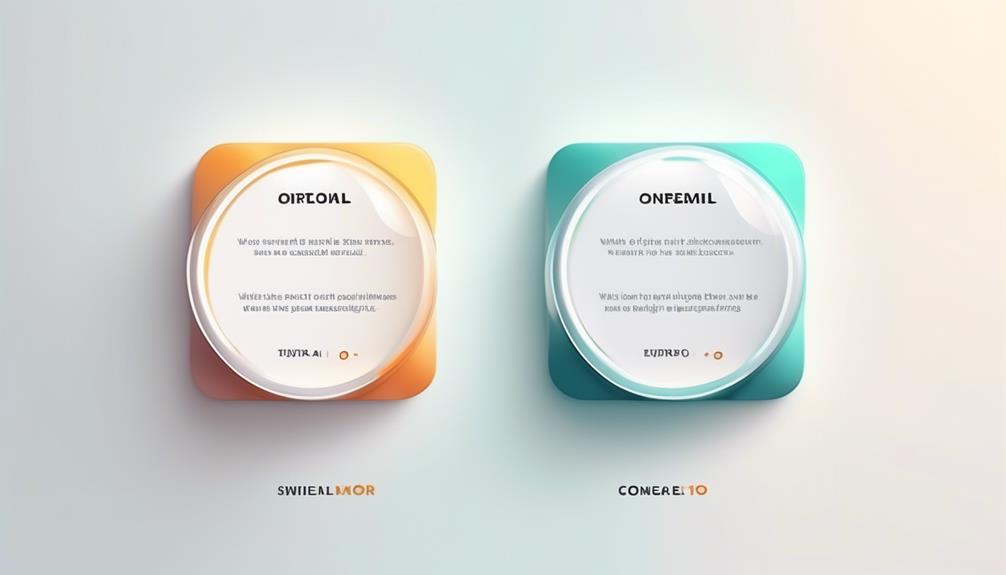
When it comes to call-to-action testing, we've found that the choice of button color can have a significant impact on click-through rates.
Additionally, testing different text versus image call-to-action formats can provide valuable insights into what resonates best with our audience.
Furthermore, positioning the call-to-action on the page can also greatly influence engagement and conversion rates.
Button Color Impact
After conducting extensive A/B testing, our team uncovered compelling insights into the impact of call-to-action button colors on click-through rates.
The color and text of call-to-action buttons can significantly impact engagement rates, as shown by a B2C company's 104% increase in form submissions after testing different call-to-action texts.
This emphasizes the importance of analyzing the results to understand how button color impacts email open rates.
Consumers also prefer personalized, service-focused call-to-actions, highlighting the need for tailored approaches.
A/B testing is crucial in identifying the most effective call-to-action text and color for your specific audience.
Text Vs. Image
Our team has observed that A/B testing different call-to-action texts is essential for understanding what resonates with our audience, revealing valuable insights into the most effective approaches for driving engagement.
In email marketing, the impact of content and subject lines on open rates is undeniable. A/B testing different call-to-action texts has led to significant improvements in email open rates, indicating the importance of crafting compelling and relevant CTAs.
For instance, testing 'get a quote' versus 'get pricing' led to a 104% increase in form submissions for a B2C company, highlighting the impact of call-to-action wording on user behavior.
Additionally, the right message at the right time can demonstrate genuine assistance and problem-solving, influencing the effectiveness of call-to-action. Therefore, continuously testing and optimizing call-to-action texts is crucial for maximizing email engagement and driving measurable results.
Positioning on Page
Positioning the call-to-action on the page can significantly impact its effectiveness in driving engagement and prompting user action. A/B testing different placements within your email campaigns can provide valuable insights into which position generates the highest open rates and click-through rates.
It's essential to test various locations, such as at the beginning, middle, or end of your email, to determine the optimal placement for your call-to-action. By analyzing data from A/B testing in email marketing, you can make informed decisions to improve your email open rate.
Additionally, considering the impact of positioning on page in conjunction with other elements like subject lines and call-to-action text can help you create more compelling and effective email campaigns.
Subject Line Optimization
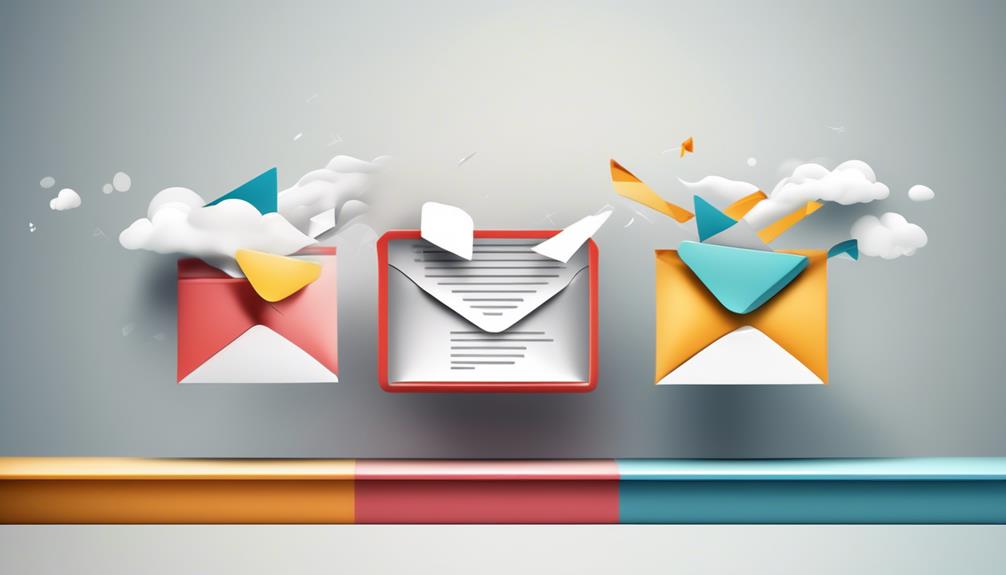
Crafting compelling subject lines plays a crucial role in significantly impacting email open rates. A/B testing results have shown that subject lines are a critical element in email marketing. By using email marketing tools to A/B test different subject lines, marketers can identify which ones resonate best with their audience.
Subject lines should spark interest and clearly communicate what the email contains, leading to higher open rates. Testing different subject line formats, such as using questions, emojis, or personalization, can lead to improvements in open rates and click-through rates. It's important to note that what works for one business may not work for another.
Some businesses may benefit from consistent subject lines, while others may see better results by changing them based on the content of the email. Marketers should constantly experiment and analyze data to optimize subject lines for higher open rates, as this can have a significant impact on the success of email marketing campaigns.
Content Variation Testing
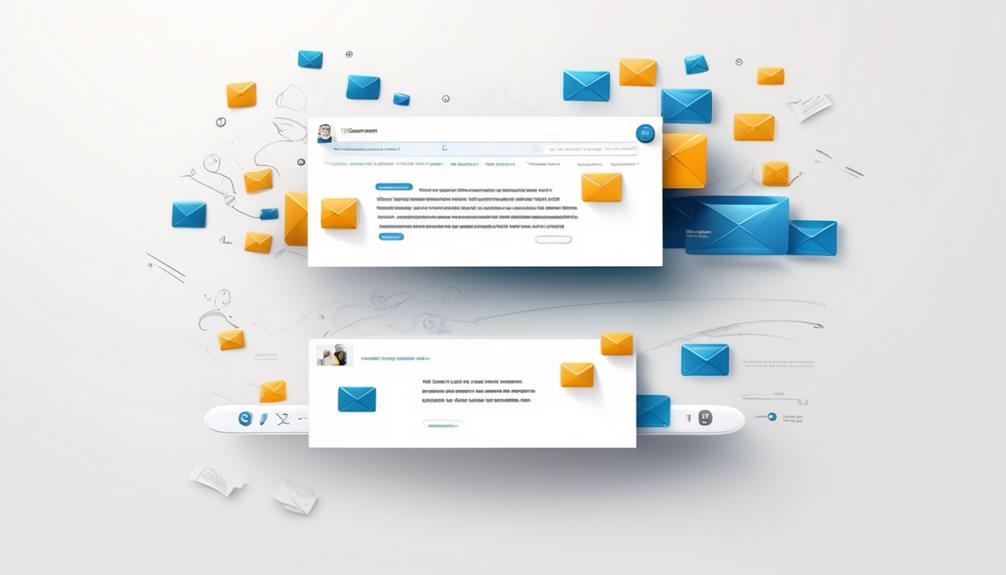
When conducting content variation testing for email marketing, identifying the most effective call-to-action texts and the optimal format for email content can significantly impact engagement and click-through rates. To effectively optimize your email content, it's essential to:
- Test Different Call-to-Action Texts: Experiment with different elements such as 'get a quote' versus 'get pricing' to determine which resonates best with your audience. Clear and enticing call-to-action texts can significantly impact click-through rates in email campaigns.
- Experiment with Various Email Content Formats: The format of email content, including video, webinars, eBooks, blogs, or infographics, can significantly impact engagement rates. Testing different variations will help identify the most effective format that resonates with your audience.
- Prioritize Statistical Significance: A/B testing tools often run tests on a small sample of the email list. It's crucial to prioritize statistical significance for valid test results. Additionally, the best time to send email newsletters should also be tested to optimize open rates and click-through rates.
Personalization Experiments

Conducting personalized subject line experiments can offer valuable insights into increasing open rates and enhancing audience engagement in email marketing campaigns. A/B testing different variations of personalized subject lines, including using recipient's name, location, or past interactions, can help identify what resonates best with the audience.
Additionally, testing different call-to-action texts within the email content can provide valuable data on driving conversions. Experimenting with dynamic content based on CRM information, such as gender, age, location, interests, or purchase history, can also significantly increase engagement.
Timing is another crucial factor, and testing the timing of email campaigns can have a substantial impact on open rates and engagement. Utilizing A/B testing software to run experiments on a small sample of the email list is essential, and ensuring statistical significance is crucial in determining the validity of test results.
Timing and Frequency Trials
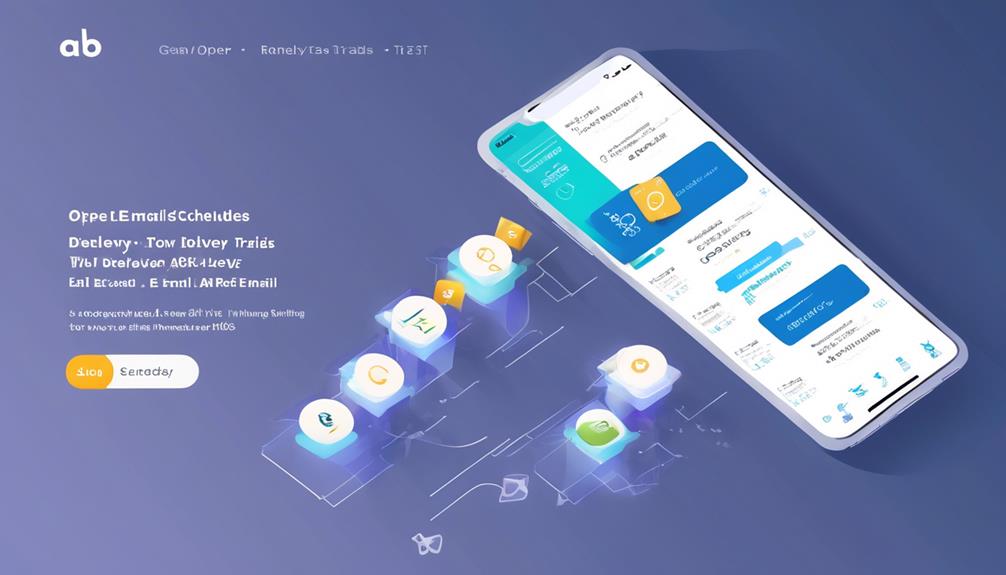
Exploring the optimal timing and frequency for email sends through rigorous A/B testing yields valuable insights into maximizing engagement and response rates. When conducting A/B tests focused on timing and frequency, here are essential points to consider:
- Day and Time Testing: Experimenting with different days and times for sending emails provides crucial insights into the optimal timing for achieving maximum response rates. Tracking open rates and click-through rates at various times can help identify the best time to connect with subscribers and ensure that emails are seen and engaged with.
- Frequency Balancing: Testing different frequencies of email sends can help determine the ideal balance between staying top-of-mind and avoiding overwhelming recipients. Finding the sweet spot where subscribers receive enough communication to stay engaged without feeling inundated can significantly impact open rates and overall engagement.
- Data Tracking and Analysis: It's essential to keep a record of trial results over time to identify trends and make informed decisions about email timing and frequency. A/B testing provides valuable insights, and continuously analyzing the data allows for the optimization of email sends to maximize engagement and response rates.
A/B Testing Statistical Significance
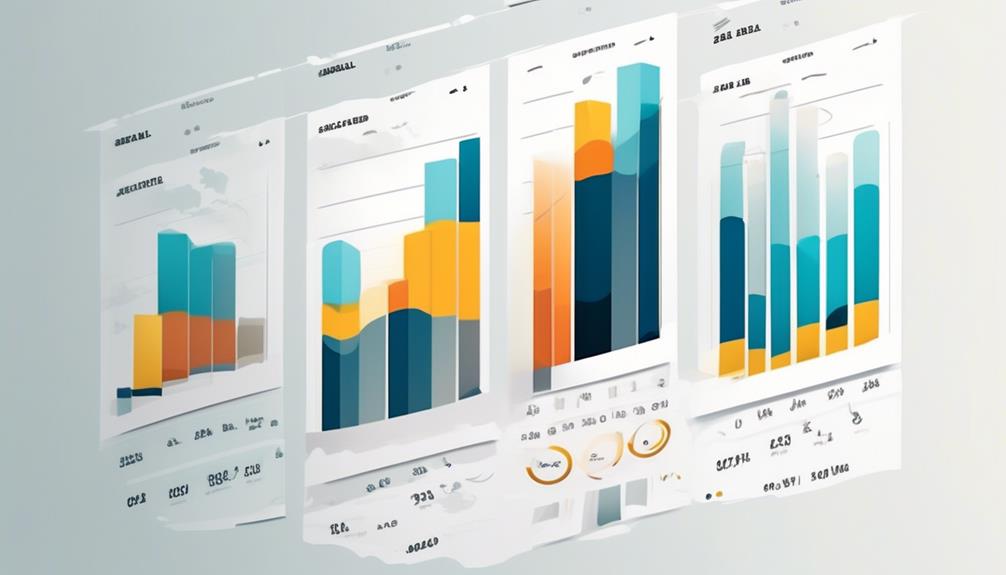
Analyzing statistical significance in A/B testing is crucial for making data-driven decisions and drawing accurate conclusions about the effectiveness of email marketing strategies. When experimenting with different elements using email testing tools, it's essential to ensure that the results are statistically significant.
This means that the observed differences in open rates between the control group and the test group are unlikely to have occurred by random chance. Statistical significance is typically measured in terms of percentage confidence or p-values.
It's important to note that larger data sets are needed to achieve statistical significance for smaller effects. Failing to account for statistical significance can lead to misleading conclusions and poor decision-making. For example, if A/B test results show low statistical significance, it becomes challenging to determine whether any observed increase in open rates is due to the changes made or simply random variation.
Therefore, when conducting A/B tests, it's crucial to ensure that the results are statistically significant to confidently identify the impact of testing different elements on email open rates.
Marketer's Approach to A/B Testing
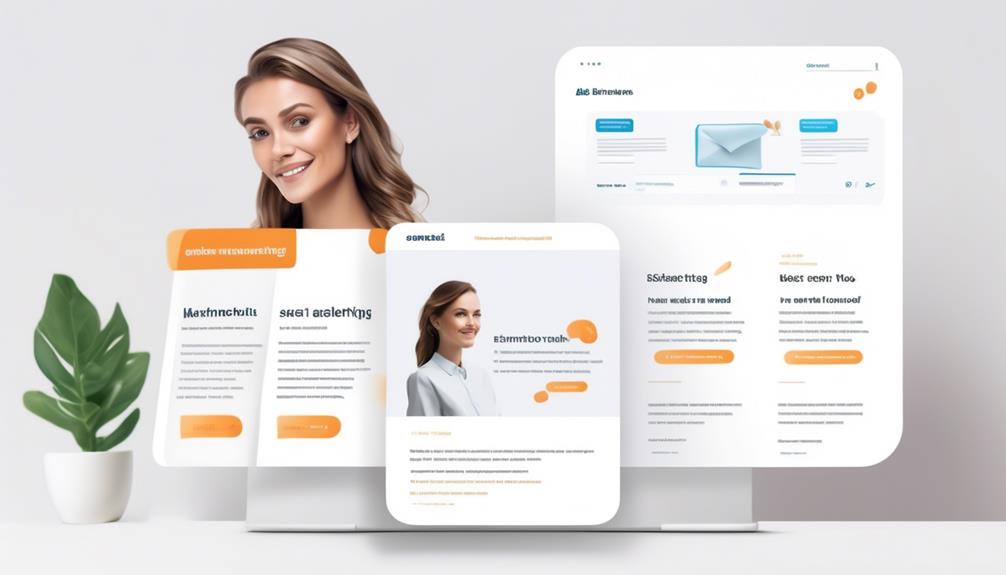
We've found that testing different email subject lines and analyzing click-through rates can provide valuable insights into what resonates with our audience. By experimenting with various call-to-action texts and subject line formats, we can pinpoint the most effective strategies for driving engagement.
It's crucial to take a tailored, service-focused approach to personalize call-to-actions and optimize open rates.
Testing Email Subject Lines
To optimize email open rates, a data-driven approach to A/B testing email subject lines is crucial for identifying the most effective strategies. When testing your emails, pay close attention to the subject lines and content, as they play a significant role in determining open rates.
Here are three key aspects to consider when testing email subject lines:
- Incorporate clear and enticing language that sparks interest and conveys the email's content effectively.
- Experiment with different wording, length, and tone to identify what resonates best with your audience.
- Analyze the impact of specific keywords or phrases in subject lines, such as the B2B company's finding that including '[Ebook]' resulted in a 30% increase in button clicks.
Analyzing Click-Through Rates
When optimizing email open rates through A/B testing email subject lines, it's essential to transition to analyzing click-through rates and the marketer's approach to A/B testing. Understanding what drives click-through rates is crucial for maximizing the effectiveness of email marketing campaigns. By testing different call-to-action texts, content formats, device compatibility, and optimal sending times, marketers can gain insights into what resonates best with their audience. Implementing welcome email campaigns with personalized content and clear call-to-action can also drive engagement and segmentation for targeted emails. Additionally, ensuring statistical significance in A/B testing is vital for reliable results. The table below summarizes key factors to consider when analyzing click-through rates in the context of A/B testing.
| Factors to Consider | Impact on Click-Through Rates | Considerations |
|---|---|---|
| Call-to-Action Texts | Significant impact | Test different CTAs for optimal engagement |
| Content Formats | Influential | Test various formats for consistent engagement |
| Optimal Sending Times | Critical | Identify when the audience is most responsive |
| Statistical Significance | Essential | Ensure accurate and reliable A/B testing results |
Hypothesis Creation

Through rigorous A/B testing, we aim to formulate precise hypotheses that will drive strategic improvements in our email open rates.
Our hypothesis creation process involves the following steps:
- Testing Subject Lines: We hypothesize that crafting compelling subject lines that spark interest and clearly communicate the email content will lead to higher open rates. By testing different variations of subject lines, we seek to identify the most effective approach to capture the audience's attention.
- Split Testing Content Formats: We hypothesize that testing different content formats and personalization approaches will reveal what resonates best with our audience. This will allow us to tailor our email content to better align with the preferences of our subscribers, ultimately improving open rates.
- Optimizing Send Times: We hypothesize that identifying the optimal time to send emails through A/B testing will significantly impact open rates and engagement. By testing different send times, we aim to pinpoint the most effective timing for reaching our audience.
Our hypothesis creation process is integral to refining our email marketing strategy and ultimately boosting our conversion rates.
Prioritizing A/B Tests
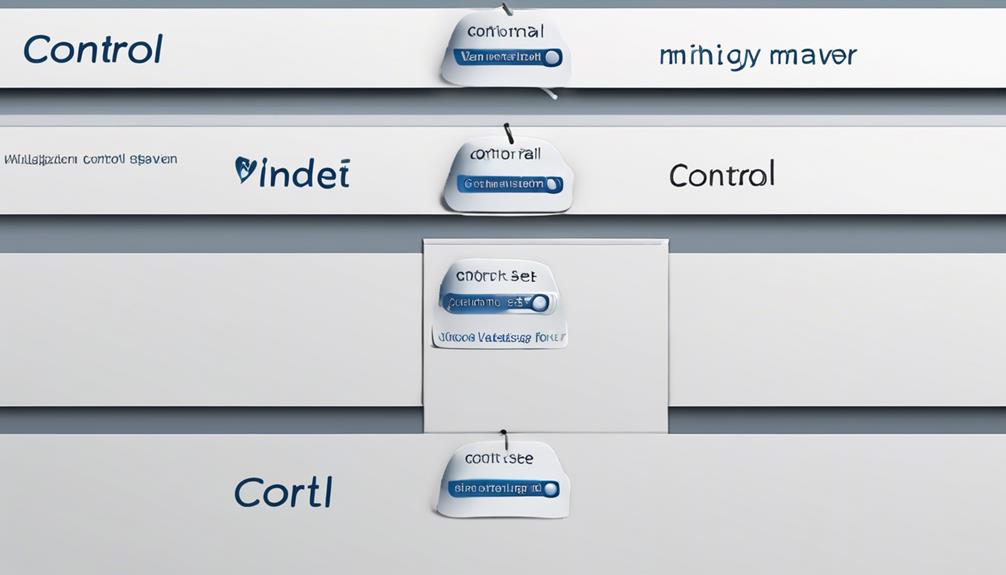
When determining which A/B tests to prioritize, we need to consider the potential impact on open and click-through rates.
Testing the frequency of email campaigns and the length of subject lines can provide valuable insights into what resonates best with our audience.
Test Frequency
Testing the frequency of A/B tests is a critical factor in optimizing email open rates and prioritizing testing strategies for maximum impact. When considering test frequency in A/B testing for email campaigns, several key factors should be taken into account:
- Consistency: Regularly scheduled A/B tests can provide valuable insights into the performance of different elements within email campaigns, allowing for ongoing optimization.
- Flexibility: Adapting the frequency of A/B tests based on specific campaign goals and audience behavior can help in identifying the most effective testing cadence.
- Scaling: As the email list grows, increasing the frequency of A/B tests can provide more robust data for analysis, leading to more reliable insights for improving open rates.
Subject Line Length
Understanding the impact of subject line length on email open rates is crucial for prioritizing A/B tests and refining our email marketing strategies. A/B testing subject lines with different lengths provides valuable insights into audience preferences.
Shorter subject lines may lead to higher open rates in some cases, while longer subject lines may be more effective in others. By testing variations in subject line length, we can tailor our email content to better resonate with our audience. This iterative approach allows us to identify trends over time and continuously optimize our email marketing strategies.
Ultimately, subject line length can significantly influence email open rates, making it a key factor to consider in A/B testing and overall email marketing efforts.
Learnings Application
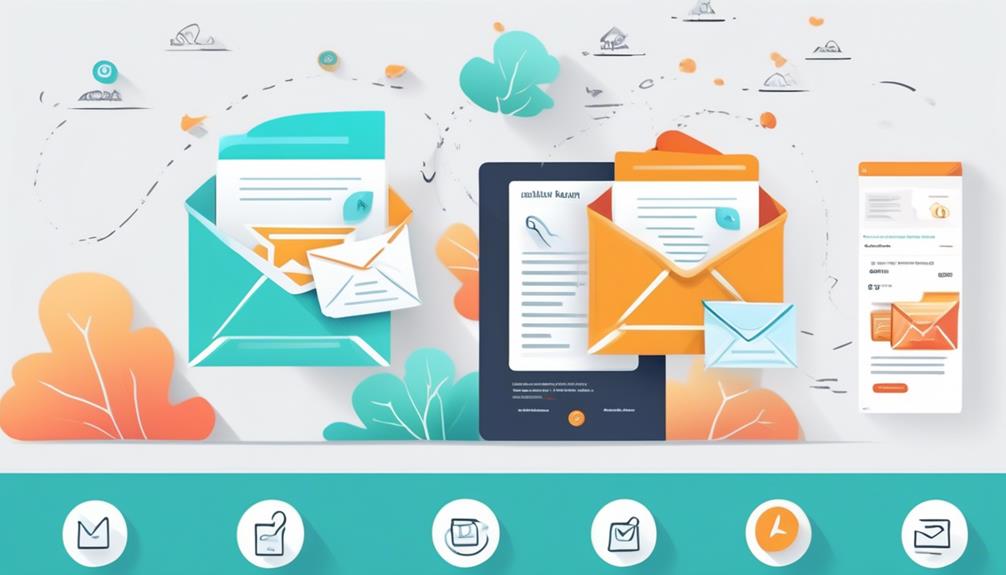
Utilizing A/B testing insights for optimizing email open rates involves implementing actionable strategies derived from empirical data analysis. Applying the learnings from A/B testing can significantly improve email open rates and engagement.
Here are three key strategies for applying the insights gained from A/B testing to enhance email marketing results:
- Implement Clear and Enticing Button Text: Utilize A/B testing to experiment with different button texts and identify the ones that resonate best with the audience, ultimately leading to improved click-through rates.
- Personalize Subject Lines and Email Content: A/B testing can help determine the most effective personalization strategies for subject lines and email content, leading to higher open rates and increased engagement.
- Optimize Timing for Email Delivery: Through A/B testing, identify the optimal days and times for sending emails to maximize open and click-through rates, thus enhancing the overall effectiveness of email marketing campaigns.
A/B Testing Tools
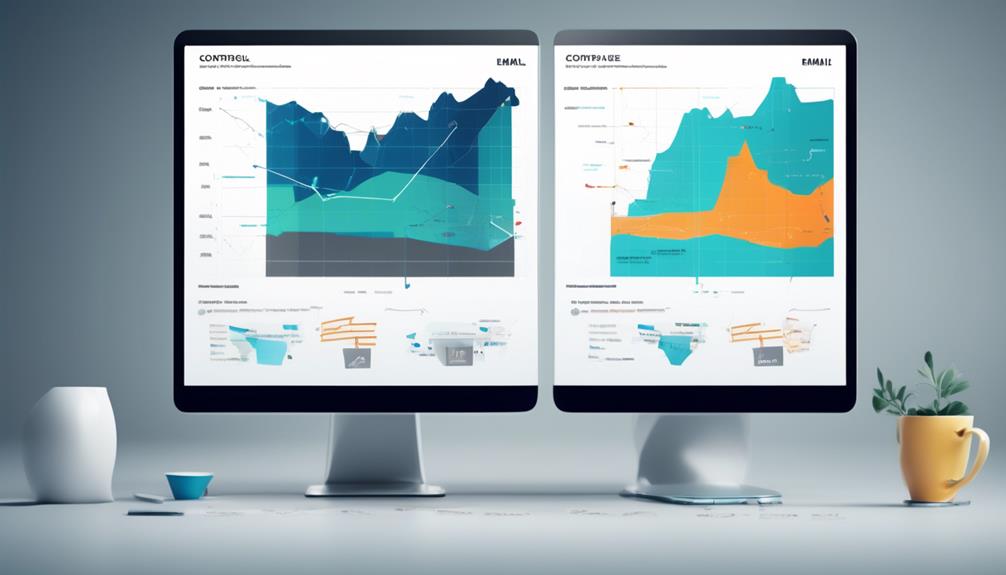
When it comes to A/B testing tools, we need to consider the features that matter most:
- Tool comparison: These tools allow us to compare different variations and determine which one performs better.
- Testing methodology: A/B testing tools help us set clear goals and closely monitor the performance of each variation.
- Performance analytics: With statistical analysis and calculators, we can determine which email elements achieve our goals more effectively.
Tool Comparison
Among the myriad A/B testing tools available, we found that comparing their features and functionality can be instrumental in determining the best fit for optimizing email open rates. When evaluating A/B testing tools for email marketing, consider the following:
- Split testing capabilities: Look for tools that offer robust split testing functionality, allowing you to compare different versions of your emails to identify those that drive higher open rates and engagement.
- Integration with email marketing platforms: It's essential to choose a tool that seamlessly integrates with your existing email marketing platform to ensure smooth implementation and analysis.
- Ability to test sender name effectiveness: The ability to test the impact of sender names on open rates is crucial. Look for tools that enable this type of testing to optimize email open rates effectively.
Careful consideration of these factors when comparing A/B testing tools can significantly impact your email open rates and overall campaign performance.
Testing Methodology
After comparing the features and functionality of various A/B testing tools for email marketing, it's essential to delve into the testing methodology, particularly focusing on how these tools enable the comparison of different variations of email elements to determine performance.
A/B testing tools allow for setting clear goals, creating distinct versions, assigning versions randomly, and monitoring performance closely. They facilitate the analysis of results using metrics like open rates, click-through rates, conversions, and revenue to make data-driven decisions.
These tools enable the testing of subject lines, visuals, sender names, timing, frequency, and calls to action for optimized results. By providing insights into audience preferences, A/B testing tools enable ongoing improvement of email campaigns.
It's crucial to ensure that the results obtained from such tests are statistically significant to make informed decisions on email content and strategies.
Performance Analytics
Performance analytics gleaned from A/B testing tools unveil crucial insights into email engagement, guiding the optimization of call-to-action variations, subject lines, content formats, device compatibility, and send timing for enhanced campaign effectiveness. These insights can significantly impact email open rates and audience engagement.
Specifically, A/B testing tools provide valuable data for improving results in the following ways:
- Identifying the most effective call-to-action and subject line variations for driving engagement.
- Revealing the impact of different content formats, device compatibility, and personalization on email engagement rates.
- Providing insights into the best days and times to reach the audience by testing the timing of email sends and tracking open rates.
CoSchedule Headline Analyzer
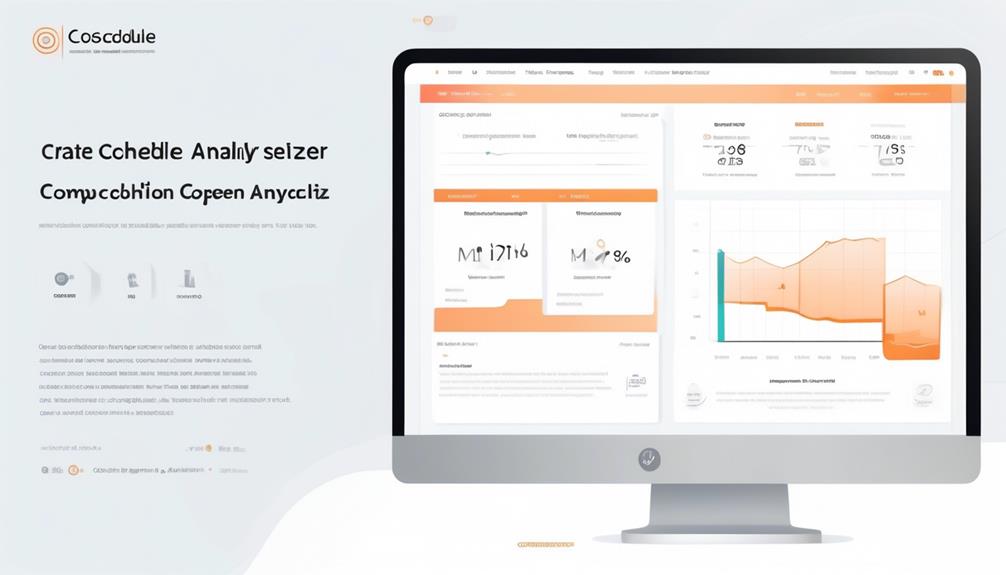
The CoSchedule Headline Analyzer tool evaluates the effectiveness of email subject lines and call-to-action texts, providing a score and feedback on their quality and potential impact. This tool is valuable for A/B testing, as it allows us to optimize subject lines and call-to-action texts for better email open rates. By testing different variations, we gain insights into what resonates best with our audience, ultimately improving the performance of our email campaigns.
| Factor | Description |
|---|---|
| Word Balance | Evaluates the use of common, uncommon, emotional, and power words in the subject line. |
| Length | Considers the character count of the subject line, helping to optimize for mobile readability. |
| Sentiment | Assesses the emotional tone of the subject line to gauge its potential impact on the audience. |
| Keywords | Analyzes the presence of common, uncommon, and emotional keywords for better optimization. |
| Readability Score | Provides a score based on the overall readability of the subject line, aiding in audience engagement. |
Using the CoSchedule Headline Analyzer, we can make data-driven decisions to craft subject lines and call-to-action texts that are more likely to capture our audience's attention and drive higher email open rates.
Sender Score Usage
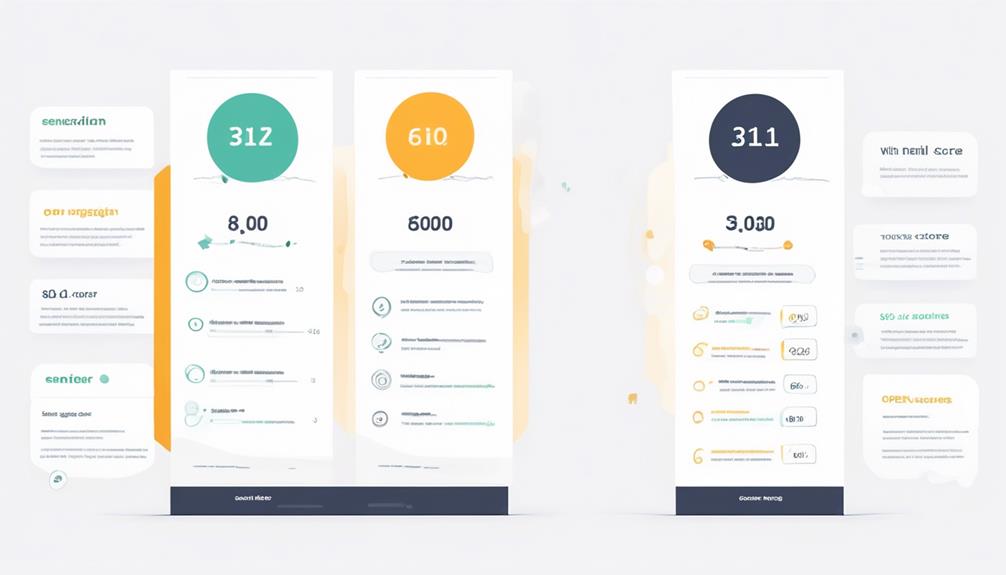
Utilizing the sender score data enables us to optimize email campaigns for improved deliverability and engagement, ultimately impacting open rates positively. Understanding and leveraging sender score usage is crucial for improving email open rates.
Here's how we can make the most of sender score data:
- Enhanced Deliverability: A high sender score is indicative of a positive sending reputation, leading to improved deliverability. By monitoring and maintaining a favorable sender score, we can ensure that our emails reach the intended audience's inboxes, thus increasing the likelihood of them being opened and engaged with.
- Reputation Management: Sender score provides insights into the reputation of the sender's IP address, taking into account various factors. By actively managing and improving our sender score, we can enhance our credibility as senders, thereby positively impacting email open rates.
- Optimized Campaign Performance: Leveraging sender score data allows us to fine-tune our email campaigns for optimal performance. By incorporating sender score insights into our A/B testing strategies, subject lines, and split testing, we can effectively tailor our content to resonate with our audience, ultimately leading to improved email open rates and engagement.
Campaign Monitor Analytics Suite
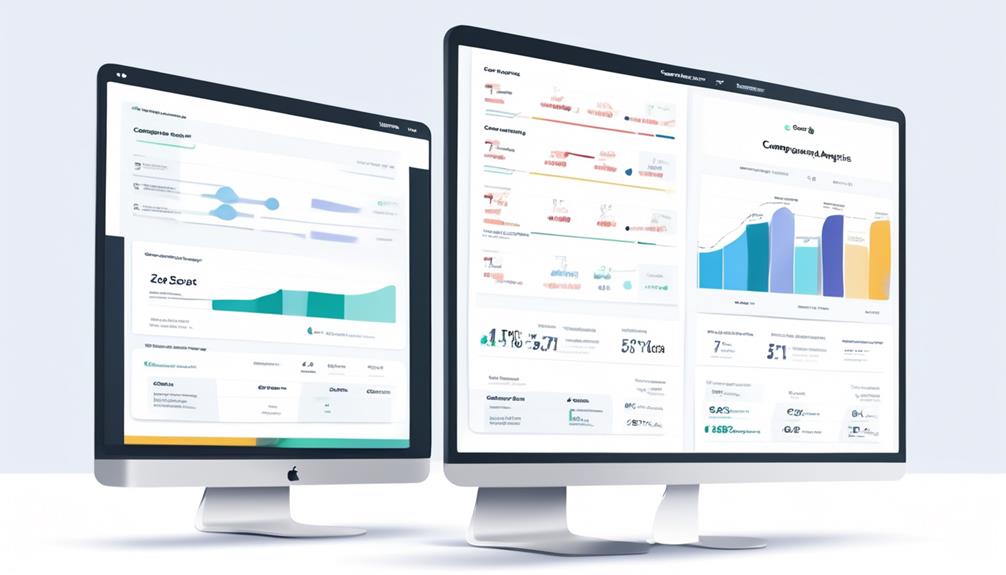
Analyzing email open rates and engagement metrics is made effortless with the Campaign Monitor Analytics Suite, providing valuable insights for optimizing our email campaigns. This suite offers a comprehensive view of key metrics such as open rates, click-through rates, and conversions, enabling us to make data-driven decisions to enhance our campaigns.
By leveraging the A/B testing feature, we can experiment with different elements like subject lines, personalization, and segmentation to understand what resonates best with our subscriber base. Additionally, the analytics suite provides the capability to track the timing of email sends, empowering us to identify the most responsive times for our audience.
The Campaign Monitor Analytics Suite goes beyond traditional email analytics by offering insights into various content types, such as support resources, sales inquiries, and demo requests. This holistic view enables us to align our email content with the diverse needs of our audience, ultimately enhancing the effectiveness of our campaigns.
With these powerful capabilities, we can continuously optimize our emails to drive higher engagement and better results.
How Does Social Media Affect Email Open Rates Compared to A/B Testing Insights?
Social media plays a significant role in influencing email open rates through social media. When compared to A/B testing insights, it has a more direct impact on the visibility and engagement of email campaigns. Utilizing social media platforms strategically can boost email open rates and enhance overall marketing performance.
Frequently Asked Questions
What Drives Email Open Rates?
We've found that email open rates are driven by various factors, such as:
- Compelling subject lines
- Tailored call-to-action buttons
Testing different elements can also impact engagement rates, including:
- Content formats
- Device compatibility
- Personalization
Why Is Ab Testing Important in Email Marketing?
A/B testing is crucial in email marketing because it allows us to test and identify the most effective strategies and elements in our campaigns.
It provides reliable data, enabling us to make data-driven decisions and optimize our email efforts for higher engagement and conversions.
With statistical significance, A/B testing ensures that our decisions are based on solid evidence, leading to significant improvements in open rates, click-through rates, and overall campaign performance.
What Is the Greatest Effect on Email Open Rates?
Crafting a compelling subject line and personalizing email content have the greatest effect on email open rates. Our team has found that these elements significantly impact engagement.
By focusing on clear and enticing call-to-action text, we've seen improved click-through rates. Additionally, testing different times and days for sending emails has provided insights into optimal timing.
Personalization in subject lines and content has also proven to improve open rates and overall engagement.
Which Component of an Email Marketing Message Has the Most Influence on Open Rates?
Subject lines have the most influence on open rates. They're the first thing recipients see and can significantly impact engagement. A compelling subject line grabs attention and entices recipients to open the email.
Our A/B testing consistently shows that subject line variations result in noticeable differences in open rates. It's crucial to craft subject lines that resonate with our audience's interests and needs to drive higher open rates and engagement.
Conclusion
In conclusion, A/B testing offers valuable insights into what drives email open rates. By testing different elements such as call-to-action buttons, subject lines, and content formats, marketers can optimize their email strategies for maximum engagement.
It's ironic that in the age of advanced analytics and testing tools, something as simple as changing a word or adding a personal touch can have a significant impact on email performance.
The data doesn't lie – A/B testing is essential for email marketing success.
Natali – Editor in Chief (Strategy and Mastery, AI Expert) Natali, our Editor in Chief, is the driving force behind our content’s strategic direction. With a keen eye for detail and a deep understanding of market trends, Natali ensures that our content is top-notch and strategically aligned with our client’s goals. Her expertise in AI helps to seamlessly integrate advanced technology into our marketing strategies, pushing the boundaries of conventional marketing.
-

 Email Automation4 weeks ago
Email Automation4 weeks agoAutomated Email Marketing 101: A Beginner's Tutorial
-

 Email Warmup1 month ago
Email Warmup1 month agoWarm Follow-Up Email
-

 Email Design Hub2 months ago
Email Design Hub2 months ago3 Essential Tools for Email Marketing Design Success
-

 Email Marketing1 month ago
Email Marketing1 month agoWhat Is Email Marketing Advantages and Disadvantages
-

 Email Marketing1 month ago
Email Marketing1 month agoWhy Email Marketing Is Effective
-

 Email Template1 month ago
Email Template1 month agoCrafting the Perfect Book Club Invitation Email Template
-
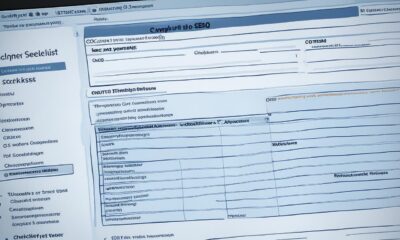
 Search Engine Optimization4 weeks ago
Search Engine Optimization4 weeks agoSEO Checklist: Enhance Your Site’s Performance
-

 Email Marketing1 month ago
Email Marketing1 month agoDoes Email Marketing Work in 2024


















